Class of 2023
Airports and Urban Development: A Case Study to Illustrate How Aviation is Shaping India’s Silicon Valley, Bengaluru – Padmanabh Kaushik ’25
Platforms and Tools used: ArcGIS StoryMaps, Gephi, Tableau

When we think about cities, we hardly think about the role airports take in shaping them. Airports act as agents of mixed-use urban nodes anchoring a wide range of activities shaping globalization. In scholarly literature, “aerotropolis” is the most ideal form of urban planning that can help airports contribute to economic activities in a city, thereby leading to urban development (Freestone & Baker, 2011). However, there are a lot of debates about the setting and implications of the models which explain airport-driven urban growth. Additionally, not every city is planned based on an “airport-centric” model. The aim of this project is to study how airports act as agents of industrial and economic development, thereby leading to the growth of cities (Florida et al., 2015).
Beyond the Track: Unpacking the Influence of Running Culture in Ethiopia – Abdi Kusata ’26



Linguistic Wealth: Language Standardization in Global Academia and the Effects on Minority Languages – Christo Maheras ’26
Living in the City: The Migrant Worker Experience in Kolkata – Tanushree Sow Mondal ’24
Platforms and Tools used: ArcGIS, Gephi, Scalar

The main information that I want to relay to my audience through this project fall under these subtopics: Kolkata’s relationship with migrants, housing systems available to labour migrants in the city, lives of migrants and challenges faced by them living in slums (one of the housing systems), and how government reports define and count aspects of these migrants’ lives (like who counts as a migrant, what counts as a slum, what counts as a household, etc.). Comparison between the last two will allow me to analyze populations within labour migrants that the reports and therefore policies and aid programs guided by those reports are excluding.
For the subtopic of Kolkata’s relationship with migration, I want to give my audience a timeline of historically significant junctures that have caused huge rise in migration into the city. The subtopic of housing systems available to labour migrants in Kolkata will focus on different types of housing that migrant workers end up inhabiting in the city and segue into my focus on labour migration and growth of slum settlements. These two subtopics will function as background and historical context for the other two subtopics, and the information for the former will come from prior research and published reports by NGOs (like Ajeevika Bureau).
Marked by Beauty: Studying Women’s Artistry and Identity through Tattoos – Zeynep Pilatin ’26
Platforms and Tools used: Adobe Photoshop, Canva, Maya, Unity, WordPress



Voices of Dalit Activism: A Collective – Fathima Yumna Hussain ’25

Having read Emily Wilcox’s Honors Capstone paper titled “An Investigation of the Intersection between Art and Activism”, her chapter the necessity of artistic expression opened my eyes to the ability that art has to regenerate and restore groups that society has scarred. That was the birth of this project, to create a collective of various types of art practiced by members of the Dalit community whilst providing sufficient context to the art.
Historically, the Dalits (दलित) or the “Untouchables” have been at the very bottom of the caste system that is prevalent in the Indian Subcontinent. This social differentiation has significantly impacted the ability of communities at the bottom of the system to achieve their aspirations in any shape or form. Rooted in the Hindu Varna’s, these classifications came about as a result of one’s occupation, wealth, power and privilege.
Class of 2022
Early Sri Lankan Migration to Australia – Sidath Chandrasena ’25
Platforms and Tools used: ArcGIS

The mass migration of Sri Lankans to Queensland in the late 19th century is an anomaly in a period of Australia’s exclusively white post-colonial history.
Yet in 1882, the SS Devonshire left Galle, Ceylon (now Sri Lanka) with 500 Cingalese, bound for Mackay & Bundaberg in North Queensland. Many of these migrants remained in Australia after federation in 1901, despite the hostile environment towards non-Europeans.
Little information exists about this migration, apart from a few pieces of literature, newspaper articles and records.

Research Questions
In order to address this gap of information, my project aims to answer the following questions:
Why were the Devonshire migrants permitted to remain in Australia at a time when other non-Europeans (such as South Sea Islanders) were forcibly deported?
What were these migrants’ contributions to their local community and society?
A Glimpse at the Second Indochina War (The Vietnam War) Through Vietnamese vs. American Public Documents – Trang Tran ’25
In this project, by using digital methods and tools for textual analysis, I aimed to explore the differences and similarities between the Vietnam War coverages in English and Vietnamese contemporary materials, and thus, attempted to answer my research question concerning the portrait of this conflict from Vietnamese vs. American modern perspectives. To construct that picture, my project focused on three major events in the Vietnam War, which are Operation Starlite (the Battle of Van Tuong) – the first major offensive action conducted by a purely US military unit, the Tet Offensive – a decisive turning point that leads North Vietnam to victory, and the Fall of Saigon – the final and official victory of the Democratic Republic of Vietnam (North Vietnam) against the Republic of Vietnam (South Vietnam). Those events occurred throughout the period from when the US military officially entered the Vietnam War in 1965 to the time when a North Vietnamese tank rolled through the gate of the Presidential Palace in Saigon, effectively ending the warfare in 1975.
Investigating Indigenous Language Revitalization in Ecuador – Shirel Salinas ’24
Platforms and Tools used: TimelineJS, Wix

Research Question: To what extent, is indigenous language revitalization possible in Ecuador?
The research question above came from frustrations I’ve experienced, at a market in Salasaca, Ecuador. Walking around booths, I find myself lost from my cousin when looking for bracelets and as I ask for directions, I came across various people who only spoke to me in Quechua. In my previous visits to my country, I’ve always felt involved, encompassed by aromas of my culture, included and at peace, yet, at that moment I felt like a foreigner. I couldn’t help but feel that I’ve neglected a part of me I shouldn’t ignore. I am mestizo, mixed Indigenous and White yet why haven’t I acknowledged my ancestral roots, my indigenous background, my Ecuador…why don’t I know Quechua?
Queer Caribbeans: Art and Activism – Emily Ortiz ’23

In my research, I begin by mentioning the influence of art as a form of activism for Queer individuals during the 1980s Aids epidemic. During this devastating time, Queer people, especially Black And Brown Queer people, were the most affected by the disease. Through years of protesting and political organizing, Queer folks gathered in the community to make their voices heard. The contribution of art as a form of activism honors the community organizing that curated social change by LGBTQIA+ members and Queer people of color.
Furthermore, I focus my research on the artwork of Queer Caribbean Photographers: Mia Vasquez and Nadia Huggins. Each of their work highlights the connections between identity, activism, and art. My main goal for this project is to honor and credit the artwork of Queer Caribbeans, who use their creativity to highlight and represent their communities. Art has the power to cultivate social change but, most importantly, make people feel seen. This project and these artists’ artwork can make other Queer Caribbeans feel seen and valued, and I hope it does that and more.
Race and Representation in Counterfactual Speculations of Slavery – Maya Nylund ’23


Rail, Reel, and Telegraph — Technology and its Optics in 19th c. British India – Swetha Tadisina ’25
Platforms and Tools used: Google Sheets, Google Slides, Prezi, YouTube


Archival Images from various British and Indian sources’ websites and collections.
Maps from the David Rumsey Collection and University of Chicago’s Digital South Asia Library.
Refugee Crisis in Turkey: Exploring the Public Perception – Baris Yazici ’25
Platforms and Tools used: RStudio, Twitter’s API, Voyant


The Transition of Phnom Penh City: Buildings Development in the Contemporary City – Socheata Huot ’25
Class of 2021
Byzantium, Constantinople, Istanbul: the City – Meltem Pelin Çetin ’24
Platforms and Tools used: Citation Machine, Google Sheets, iMovie, Pexels, Voyant, Wix
Photography & videography by Ahmet Akpolat, Meltem Pelin Çetin, Ceyhun Derbederoglu, Mayra Kalaora, Polina Kovaleva, Bhargava Marripati, Nadezhda Moryak, Christopher Schultz, and Enes Berk Sengöz.
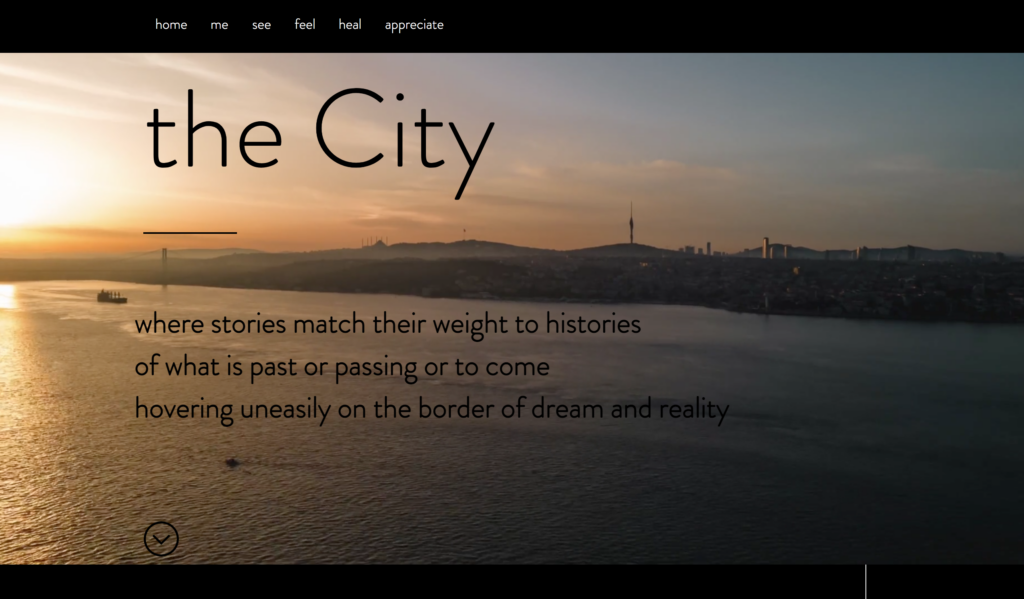
hi. I’m the creator of this project -someone lucky enough to live, breathe and be in the City.
I have known the City as “İstanbul.”
I argue that the City has never been owned by any state or nation – the City is instead its own entity formed by tensions and coexistence, a transnational space that harboured and still harbours various ethnicities, countries, religions, and cultures.
I attempt to combine and connect the various forms of humanities such as the historical works based on the City, the literary narratives of the City and the visual arts inspired by the City in my project to evoke the senses of my audience through the use of digital art components, including but not limited to digital images, videos, photographs, sound, music.
I wish to reveal the diversity of cultures, values, and stories within the past and present of the City by creating a digital humanities project based on the human experience reflecting my perspective of Istanbul as the “beautiful mess” and the place that feels most like home.
The Impact of Hebrew School Education on Young Jewish American Opinion on Israel-Palestine – Olivia Newman ’22
Platforms and Tools used: Scalar, Voyant (Cirrus)
The Israel-Palestine conflict is one of the world’s most enduring conflicts, having persisted for more than fifty years. As a young American Jew, this issue has been an important aspect of my life ever since I originally learned of its existence. However, as I have progressed through my education and been exposed to varying ideas and world views, my understanding of the conflict has changed drastically, and I believe that many other young American Jews have had similar experiences.
Marisa Kabas, for instance, “a second-generation American Jew and granddaughter of a Holocaust survivor…was raised to unequivocally support Israel” (Kabas 2). However, after the Al-Aqsa Mosque, a Muslim holy site in East Jerusalem, was invaded in May of 2021, Kabas expressed her disdain for the country’s actions on Twitter. She was surprised by the response she received, which was:
“overwhelmingly affirmative…with fellow American Jews publicly and privately agreeing they’re no longer able to accept the party line on Israel-U.S. relations. They’ve been grappling with the version of Israel presented on trips organized by groups like Birthright versus what they’ve seen unfold on the ground, how to square their love for their people and history with their commitment to racial and social justice, and how Israel’s actions in Palestine seem to fly in the face of “tikkun olam” — the Jewish principle of improving the world through action” (Kabbas 4).
Clearly, many young American Jews are struggling to reconcile what they have been taught about Israel and the Israel-Palestine conflict, and the events they see occurring in real time. The goal of this project is to serve as a starting point for American Jews who were raised to unquestioningly support Israel and Zionism to begin to unpack those belief systems, and understand why and how they came to the conclusions they hold today. I believe that this understanding will be helpful in encouraging American Jews to explore the Palestinian experience over the last seven decades, and gain a better understanding of the Palestinian cause.
Important terms/definitions:
- Hebrew School: supplementary education for Jewish children and adolescents, centered around Jewish history and culture and learning the Hebrew language
- Modern Political Zionism: “a Jewish nationalist movement that has had as its goal the creation and support of a Jewish national state in Palestine, the ancient homeland of the Jews” (Encyclopedia Britannica 1).
- Young American Jews: American Jews between the ages of 18-29
- Support for Israel: For the purposes of this project, I have chosen to define support for Israel as a feeling of connection to and care for the Jewish state.
Individualism and Collectivism: An American and Indonesian Comparison and Analysis on Federal Government Responses to the COVID-19 Pandemic – Catherine O’Connor ’23
Platforms and Tools used: Scalar, TimelineJS, YouTube
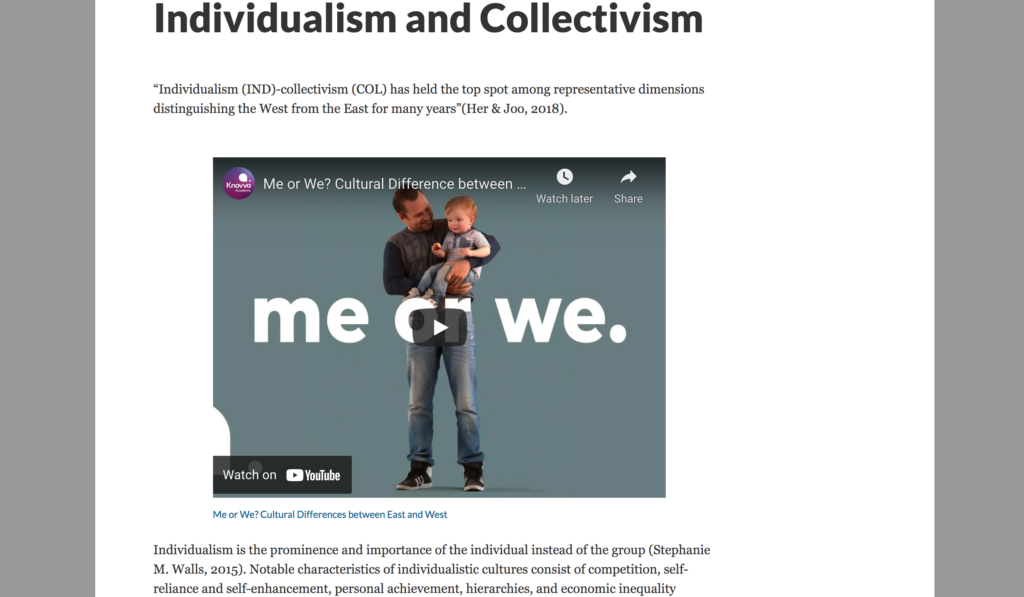
In this project, I studied the impact of individualism and collectivism as typical dimensions to describe eastern and western countries, using The United States and Indonesia to represent the East and the West, respectively, in my case study. COVID-19 emphasized that individualistic or collectivistic orientations impact both day-to-day life and tumultuous events. In this case: a pandemic. So, I asked myself: do the influences of collectivism or individualism within culture also extend to the actions and responses of federal governments? And did the response of the United States, as a historically, politically, economically, and socially individualistic country, differ from the response of Indonesia’s central government as a country deeply rooted in collectivism.
You will see that Americans and Indonesians are impacted socially and culturally by individualism and collectivism in this project. However, the responses and actions of former United States President Donald Trump and current Indonesian President Joko Widodo to the COVID-19 pandemic do not appear to have significant differences. Therefore, the cultural differences between individualistic and collectivist cultures are not reflected or extended in the actions of the federal government.
In The Manner of The Marquis Literary Magazine – Sarah Scally ’22
Platforms and Tools used: WhatTheFont, Wix
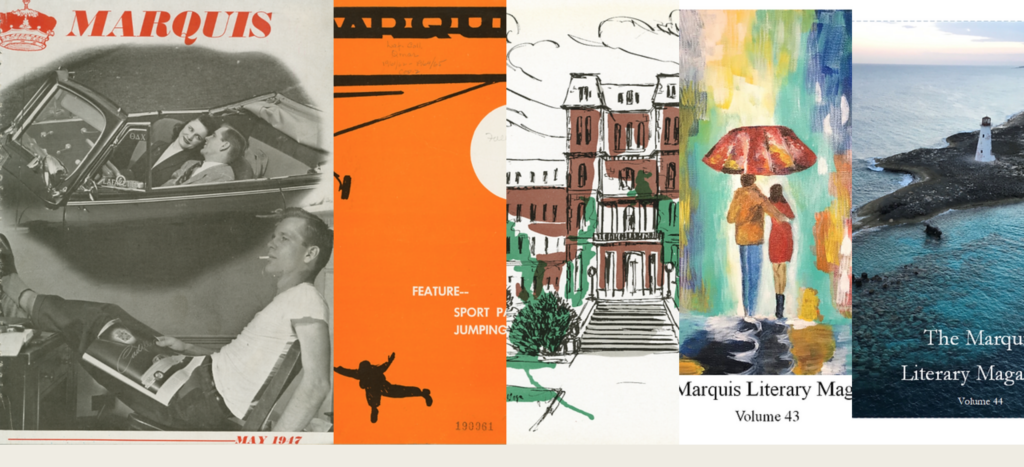
In 1947 two students at Lafayette College decided to start running a literary magazine. The Magazine has gone through many changes over the course of the last seventy years.
For the past few years ever since I became a co-editor for Lafayette’s literary magazine I have been interested in looking into these magazines from the perspective of history at the college. One of the main reasons I was accepted into my position as co-editor was because of my hopes to create a digital archive where past issues would be available for students to read and learn from but also as a method of finding a way forward for The Marquis Literary Magazine through the lens of the past.
This in recent years has brought me to my senior year and my plans to complete a year long thesis.
My plans for my thesis consists of writing a large number of poems, at least seventy as I hope to write one for each year the magazine was published but likely more to account for the fact that multiple issues of the magazine were published some years.
This website is looking at eight poems- one for each decade the magazine has run in!
The Inspiration for this project has been the book Poems in the Manner of by David Lehman. In his introduction Lehman states “[he] had in mind the shibboleth that in the writing of poetry, to have a distinctive “voice” is everything. There is a counterview, demonstrated by Fernando Pessoa, inventor of “heteronyms,” that the poet should adopt as many names, personae, masks—call them what you will—as suits his or her personality.” This brought him to write a book with the inspiration of world-renowned poets, the ones on the cover for example.
My plan is to write in the manner of those who have come before me at this school. There are pieces complaining about school life and pieces contemplating on life’s true meaning. I spent time deconstructing the poems into they’re meanings and then writing a modern version.
Numbers, Districts, and People: The Fight Against Partisan Gerrymandering – Yazdan Basir ’23
Platforms and Tools used: ArcGIS, FiveThirtyEight’s Gerrymandering Project, Github, Google Scholar, JSTOR, ResearchGate, Tufts University’s Metric Geometry and Gerrymandering Group (MGGG)
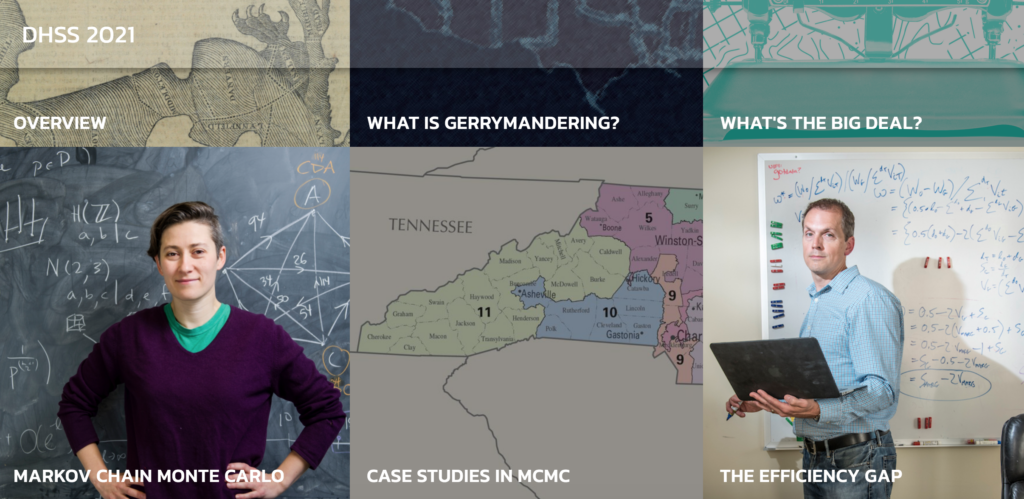
The aim of this project is to develop insight and an understanding of the various approaches – from modern mathematics and computer science – being used to detect partisan gerrymandering and why doing so is imperative for the future of democratic systems around the world.
Gerrymandering is a long-standing political phenomena that individuals, organizations, and/or parties abuse for an unfair advantage over the other. It’s just like any tool in the book. However, in my opinion, the ramifications of gerrymandering run far deeper than other political maneuvers used to gain a seat here or there.
Ultimately, this project is an effort to understand & answer the following questions:
1. What are the current methods being used to detect partisan gerrymandering? How effective are they?
2. Why is there even a need to detect gerrymandering in the first place? What’s the big deal?
3. What impact does gerrymandering have in the US today?
An important disclaimer/clarification to make before getting into the other sections of this project is that this work will be focused on partisan gerrymandering in the United States. The reason for this is twofold:
a. The United States just completed the 2020 Census which is essentially the process of counting how many people are present in the country and where. This is a procedure that occurs once every decade and determines the allocation of funds and resources to communities in America and informs where schools, hospitals, and roads etc. need to be built in the country. Every census is followed by a phase of redistricting where lawmakers redraw/readjust their maps based on the results of the census. This is where the bulk of partisan gerrymandering occurs and the phase of redistricting is about to start very soon in the United States, making this study extremely relevant to the political discourse in this country at the time of writing.
b. DHSS is based in the United States and I am also studying at Lafayette, which is in the United States, so it makes logical sense to focus on the data available here and the implications it has on the places around me/DHSS/Lafayette as a whole. This does not change anything in the grand scheme of things because gerrymandering isn’t unique to the United States and detection methods can be applied in any country since they are just mathematical and/or computational models and algorithms. In other words: the lessons learned here and the conclusions made can be applied universally. What this does is that it enables me to narrow the scope of my project to a reasonable degree and let’s me work with data/case studies that are readily accessible to me and applicable to scenarios around me.
Unsung Heroes Of The Indian Subcontinent Partition – Ali Sultan Sikandar ’23
Platforms and Tools used: ArcGIS StoryMaps
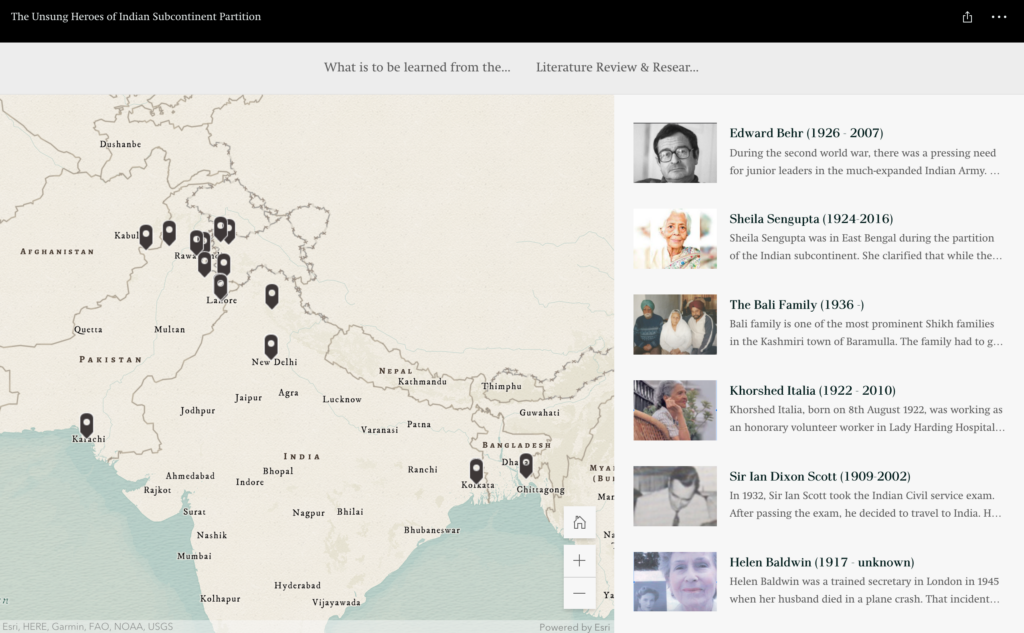
The partition of the subcontinent was one of the major historical events of the twentieth century, and while the events leading up to it are documented well in many books across the globe, there are many stories that did not ever make it to the mainstream. Highlighting these stories is essential, since they not only let us experience the partition through the eyes of people who saw it firsthand, but also shed light on people who achieved feats of heroism without getting enough recognition.
These stories come mostly from oral interviews spread across the internet. The SOAS archive of Partition Voices, (https://study.soas.ac.uk/partition-voices-soas-archive/), the 1947 Partition Archive by Stanford Digital Library (https://www.1947partitionarchive.org/), and the book Partition Voices: Untold British Voices are the three most potent primary resources when it comes to extracting some great stories.
Urban Agriculture and Activism: A Case Study of Detroit – Isaiah Moore ’22
Platforms and Tools used: R, Wix
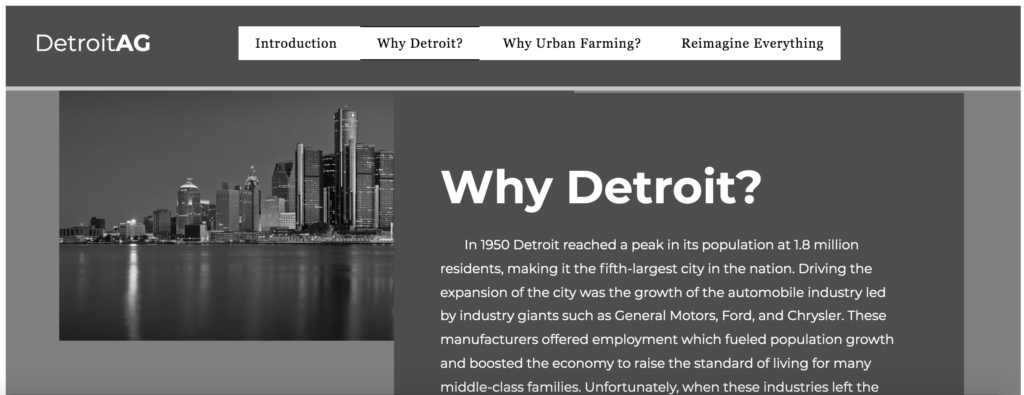
I started a garden in the summer of 2020, but I’d been planning one for years. At the height of the Covid-19 pandemic, my family and I grew squash, melons, beets, peppers, tomatoes, and herbs as a way to pass time, but also to have access to fresh produce when it was needed. What the garden represented for us was an opportunity to exercise some amount of agency over the foods we consumed within a food system that did not recognize this as a basic right for everyone. It had been my observation of this disparity that sparked my interest in gardening years prior.
At 13 I became a student of an exorbitantly wealthy, predominantly white institution. Still, I was the son of an educator in a predominantly black and low-income district of Cleveland. I resented the contrast between receiving catered meals prepared by chefs in the school cafeteria while simultaneously distributing bagged meals to families experiencing food insecurity. I understood that while some supermarkets lined their isles with unblemished products, whole neighborhoods relied on corner stores that could only sell highly processed calories. As a student, I learned how this systemic failure is interconnected with the history of race and class in this country (and globally as well, but that is not the focus here.). More specifically, the countries history of stealing land from black farmers (indigenous people as well, but again not the focus), housing segregation, employment discrimination, and violence against black business ownership, all culminating in today’s environment where poor families, especially black, often live in a state of insecurity and dependency on a system that does not recognize their moral worth.
Suddenly, our garden had become more than just a hobby. It was acting in opposition to a set of conditions prescribe to my family, and even more so to people within my community. It was an alternative that painted a clearer vision of what a transition towards food sovereignty might look like. But this wasn’t activism.
My name is Isaiah Moore. While this is my personal story, it is by no means unique. Across the nation and throughout history black farmers have used land, water, and sunlight to build autonomy within their communities, and develop the capacity to make decisions about their own food. In this project, I will attempt to share one inspiring example with you.
welcome to our house: an exploration of queer world-making in New York City’s underground ballroom culture – Mariatou Coulibaly ’23
Platforms and Tools used: Cargo, Google Voice, Instagram, Otter.ai, Tik Tok, Twitter
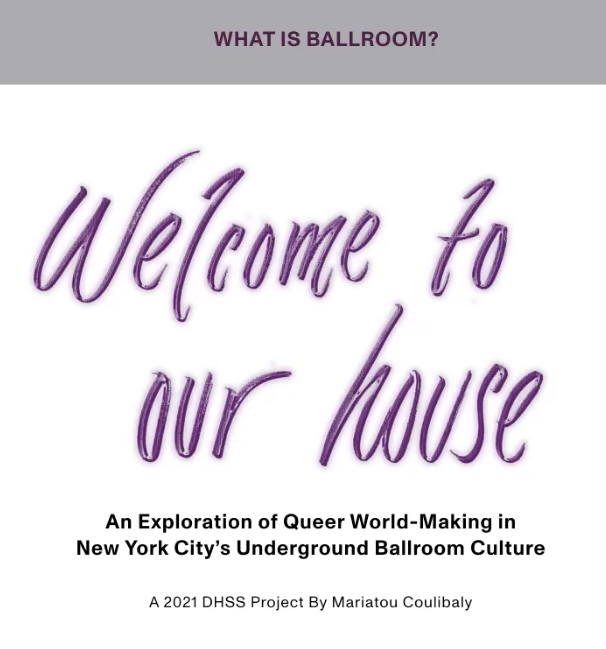
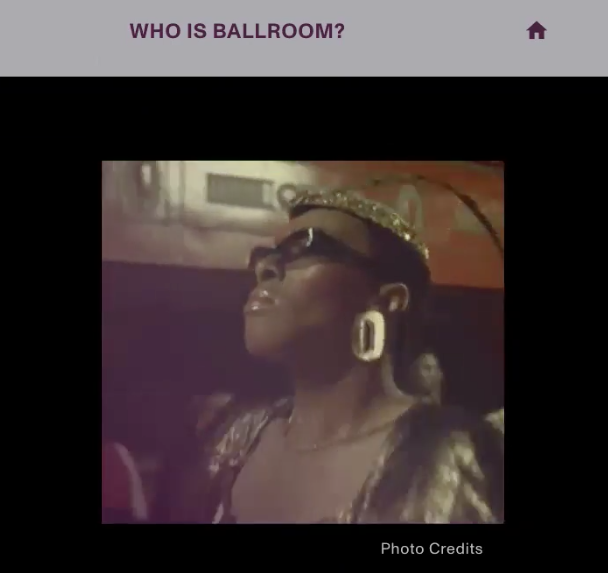
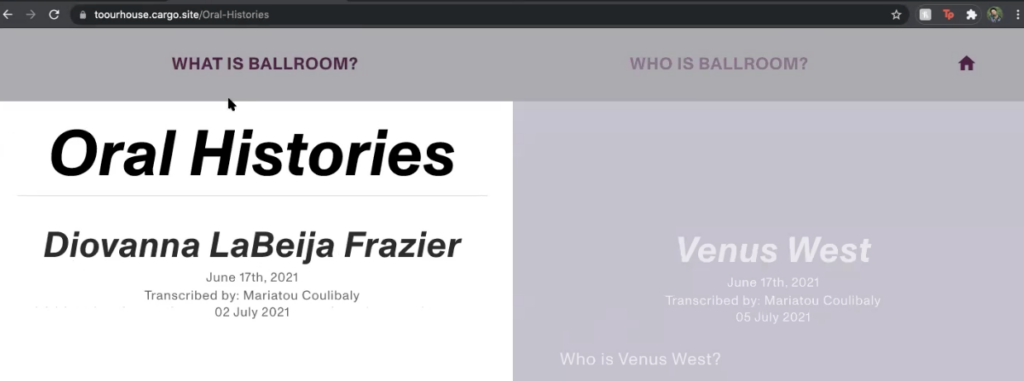
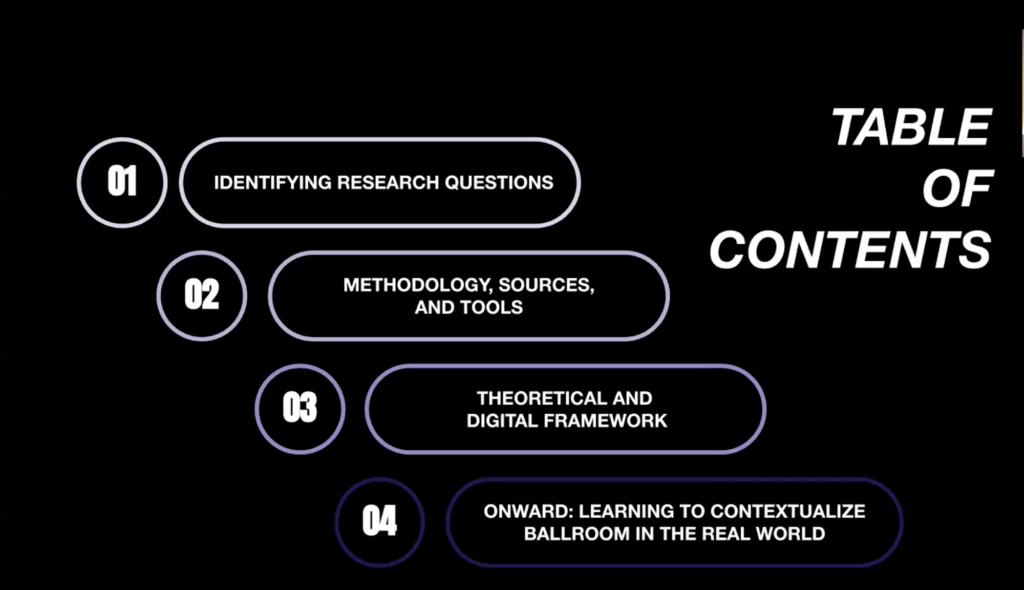
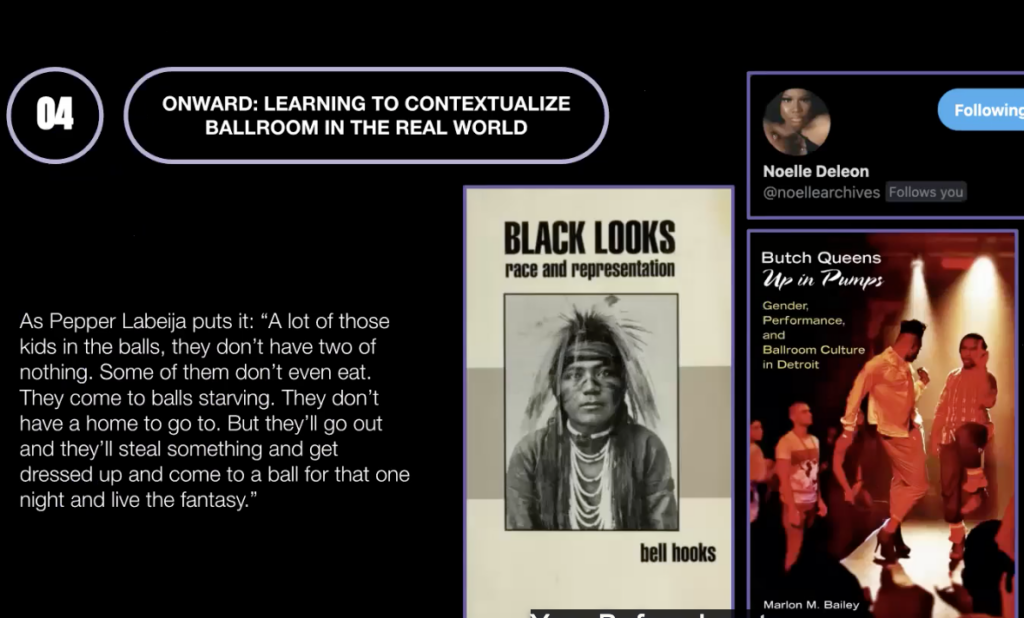
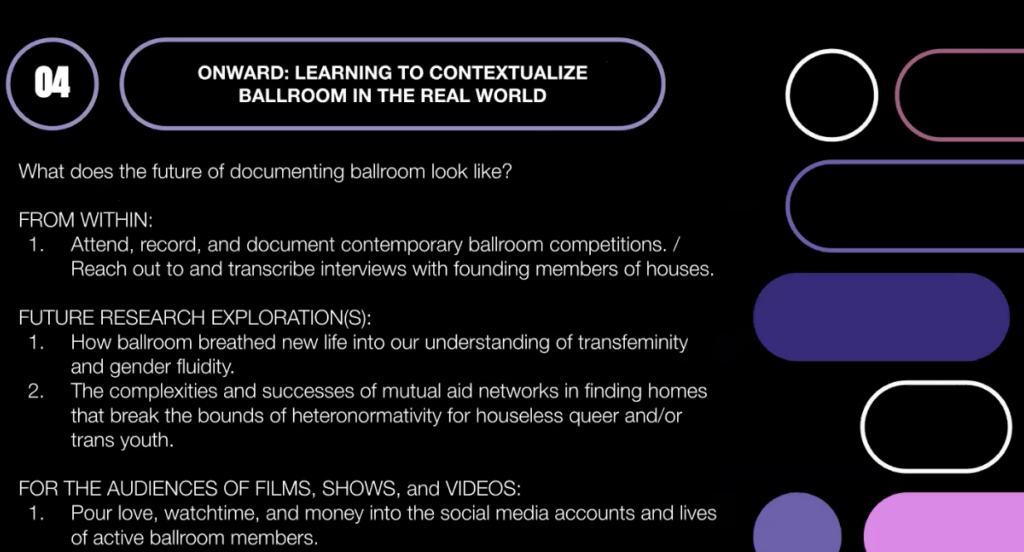
Class of 2020
The Femme Fatale and The Distortion of Female Criminality – Megan Deacon ’21
Platforms and Tools used: Microsoft Excel, OpenRefine, Tableau, WordPress
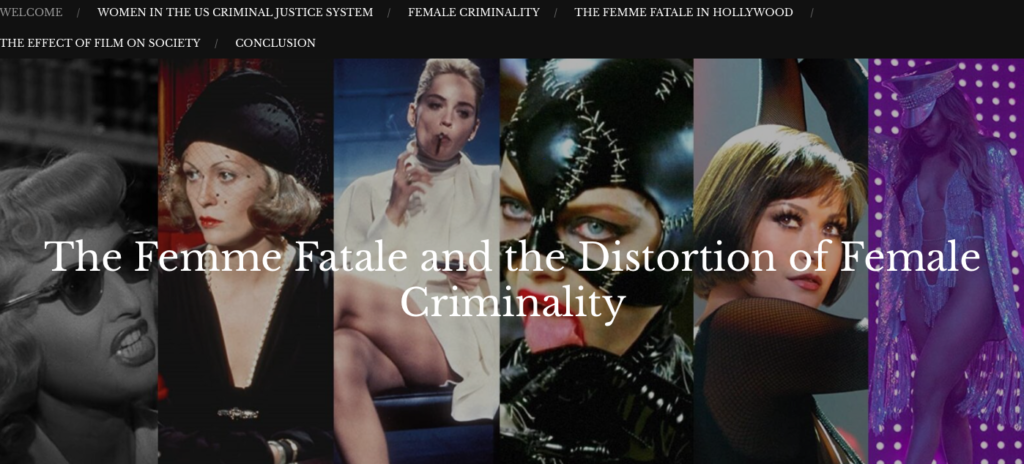
In order to compare film with reality, I have collected my own set of data on films which feature characters that I would define as a femme fatale. For each film I have recorded the name of the film, the year it was produced, the name of the femme fatale character, the name of the actor playing the character, the ethnicity of the actor, whether or not the femme fatale character is the main character of the film, the crime/villainous act committed by the femme fatale, the method by which the femme fatale commits this act, the motivation for committing the act, and the repercussion for the femme fatale. As well as looking at this quantifiable data, I will also feature five case studies of different films, in order to explore the nature of female criminality presented by each film in more detail. Through this broad and detailed data I will explore if and how these films distort the reality of female criminality.
Finally, the ‘so what’ aspect of my project lies in the question ‘does it even matter if the femme fatale trope/character distorts the reality of female criminality?’ I will deal with this ‘so what’ aspect of my project by drawing on theory and arguments put forward by psychologists that deal with the connection between films and people’s/society’s beliefs and culture.
The key goal of this project is to expose the reality of mass incarceration and its effect on women, to people who may be unaware of how women interact with the criminal justice system. I want people to be interested by mass incarceration and women’s increasing contribution to it, so that they may go away and learn more. Finally, I want my readers to understand that one of the reasons they may not know much about mass incarceration and women in the system, is because the only interaction they have with it is through films which present crime to us as a form of entertainment.
A History of Displacement and Development in D.C.’s Chinatown – Shirley Liu ’23
Platforms and Tools used: GitHub, TimelineJS, Voyant (Cirrus)

Image: Residents of Wah Luck House, a subsidized housing complex that mainly accomodates Chinese senior citizens, shopping in a Chinese grocery store. Because there are no Chinese grocery stores in D.C., they must take a bus 14 miles to Falls Church, VA. (via Amanda Voisard/The Washington Post)
“Gentrification” has morphed into a sort of buzzword nowadays, especially in the case of ethnic enclaves like Chinatown. The safest route of rhetoric for most is to condemn the displacement of low-income and minority residents, while begrudgingly admitting that the process has led to economic rejuvenation in previously stagnant areas. This is certainly the case for Washington, D.C.’s Chinatown; although many deride the downfall of this neighborhood, which once bustled with Chinese-American residents and now seems unrecognizable from any other downtown shopping center, people often concede that the area has seen an economic boom since the advent of redevelopment efforts in the 1970s.
However, I believe that this mode of analysis regarding the displacement of Chinatown’s residents is naive at best and outright dangerous at worst. While it is great to hear from members of the Chinatown business elite, many of whom do happen to be Chinese themselves, that redevelopment has been overall beneficial to the local economy, the voices of Chinatown’s low-income Chinese and black residents are missing from the conversation. Through my research, I aim to answer the following questions:
- How have residents of affordable housing in the Chinatown area been affected by downtown urban revitalization efforts?
- How has the local response to gentrification in Chinatown changed over time?
- What does it mean to “save Chinatown?”
The Evolution of Research Focus in Food Studies – Oyuntugs Gantumur ’23
Platforms and Tools used: Google Scholar, Microsoft Excel, Voyant, WordPress
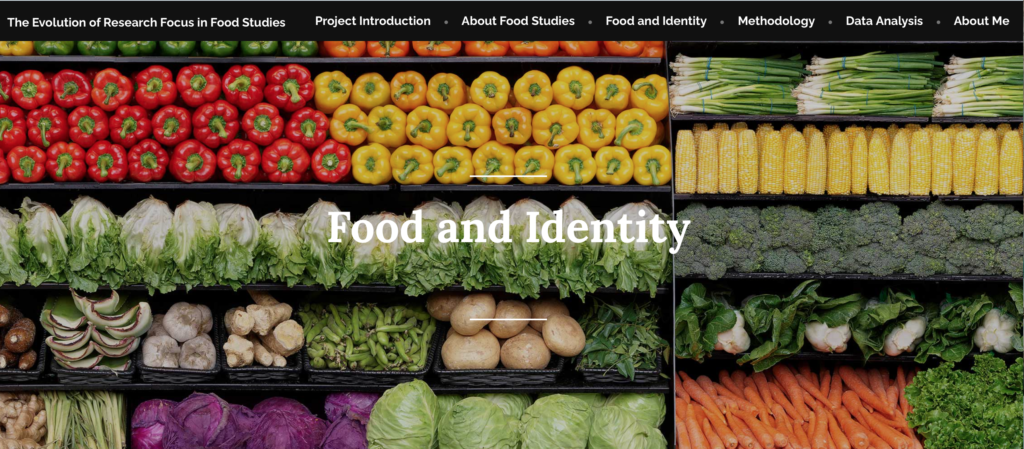
At the beginning of the program, my project idea concerned the relationship between food pictures on social media and food business. With the rise of social media use, people started posting more food pictures on social platforms, especially on Instagram. I wanted to research how this trend on social media affects restaurant types in business, their income, and popularity. However, there was very little work done in this area, and the specific data on social media and restaurant types were unattainable, which led me to change my research topic.
Determined to explore food, I shifted my topic to “Food and Identity: What does the food on your plate say about you?” I was stunned by how much our food says about us that I didn’t expect. As reading works related to food studies, I wanted to examine how the research focus of food studies changed over time from the 1950s to the 2000s. Through this research, I aimed to answer the following questions:
- What does the food on our plate say about our identity?
- How did the research focus of food studies change from the 1950s to the 2000s?
Indo-Guyanese Women Poets – Saide Singh ’23
Platforms and Tools used: Scalar, Voyant (Cirrus)
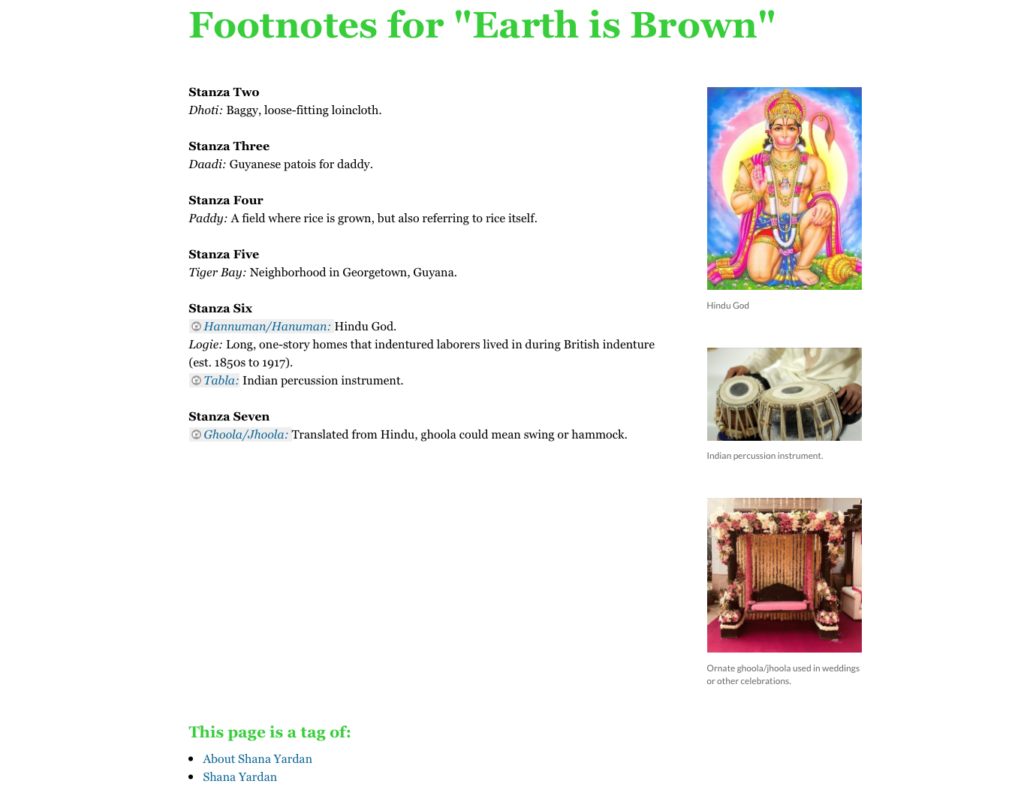
Rarely, if ever, are Indo-Guyanese women poets discussed without the mentioning of Rajkumari Singh,Shana Yardan, and Mahadai Das. Although the absence of other women poets is not necessarily the fault of scholars and historians, my project aims to uplift well-known voices in addition to contemporary poets Janet Naidu, Sharleen Singh, and Natalia Surujnath. My exploration of well-known poems in conjunction with contemporary poems has allowed me to traverse reimaginings of post-revolutionary Guyana (from 1968 onward). Of course, these women’s voices do not speak for all Indo-Guyanese women writers, but it is important to realize that the inner and external turmoil realized in their poetry characterize the quotidian realities of being an Indo-Guyanese woman living in a formerly colonized space. Close analyses and critical focus on these poems highlight each women’s beckoning towards a post-revolutionary Guyana that realizes its fault as a disunified nation.
The poems displayed on my website are accompanied by audial and visual affordances that preserve this tradition of creative expression. Each poem has an audio file of me or my sister, Sophia Singh, reading out each poem. The audio clips are annotated so that readers can follow along. The titles of each poem are linked to separate pages that act as footnotes, highlighting significant themes and giving short definitions of cultural terms. Housing supplementary information on a separate page was an intentional choice that allows the readers to interact and read the poems for their lyrical, rhythmic, and literary movements apart from trying to understand all the cultural and historical references at once. My biggest hope is that this digital space serves as a salient reminder that Indo-Guyanese women have created literary imaginings and produced beautiful art: their work deserves to be recognized and displayed.
Khmer Classical Dance in Pop Music – Songmouy An ’22
Platforms and Tools used: Omeka S, YouTube, R
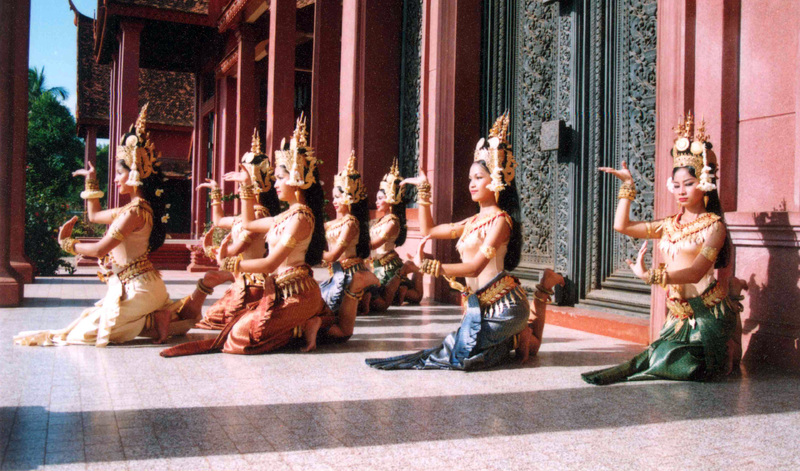
Khmer Classical Dance has a long history that is heavily associated with religious belief, monarchy, and the state. The dance got listed as UNESCO’s intangible cultural heritage of humanity in 2003. However, the art form almost went extinct under the Khmer Rouge rule from 1975-1979. Surviving artists have tried to revive the art despite many difficulties due to a lack of human resources, funding, and interest from the younger generation. There seems to be a generation gap between Cambodians born prior to Khmer Rouge and Cambodians who are born after when discussing the discourse of the dance. A phenomenon that is happening in Cambodia today is the inclusion of Khmer Classical Dance in pop music. The hypothesis is that what we see today is the direct and indirect impact of the Khmer Rouge regime, which lasted from 1975 to 1979.
The main purpose of this project is to study the causes that may have led to the acceptance of the inclusion of Khmer Classical Dances in Pop Music. First, an overview of the history of Khmer Classical Dance from when it was first recorded up until 1970 will be provided. Then, the impacts of the Khmer Rouge regime will be discussed along with its implication decades later. After that, sentiment analysis and topic modeling will be used to study the reactions of Cambodians, who are presumably born after Khmer Rouge, towards the use of Khmer Classical Dance in Pop music.
Placing Women’s Issues on the National Agenda: The Lasting Impact of Mobilization of Female Combatants by KKE (Communist Party of Greece) – Rachel Cox ’21
Platforms and Tools used: TimelineJS, WordPress
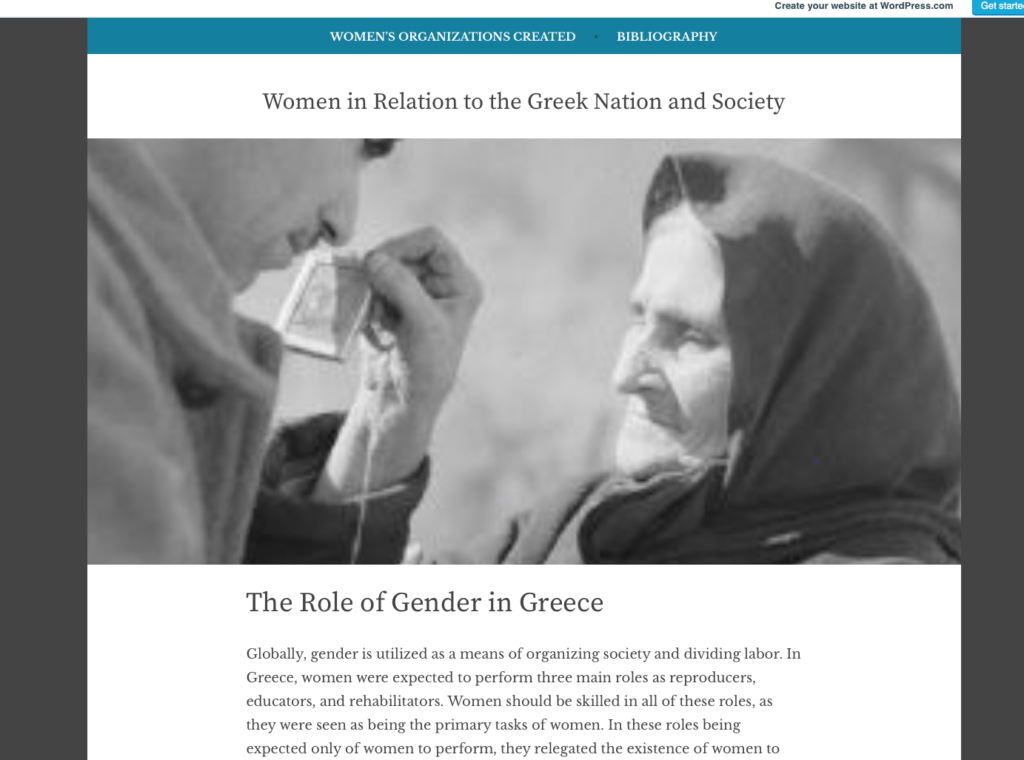
Prior to collecting resources, my project idea concerned the concepts of honor and shame, which were used to organize society in Greece until the late 20th century. These ideas rested on a gender binary and entailed the subordination of women in Greece. However, the literature produced on this topic is very minimal and could not be used to answer the questions I had posed. Despite needing to change my topic, I was determined to discuss the gender status quo of Greece in some form.
Based on the sources I collected, I altered my topic to discuss women’s involvement in the Greek Civil War. I was stunned by their active participation in the Greek Resistance against the German occupation, and how their efforts persisted during the Greek Civil War. Thus, my research seeks to analyze how the mass mobilization of women on behalf of the Communist Party of Greece (KKE) disrupted and altered the social position of women in Greece. Another aim of mine is to discuss the impact of women’s contributions in the war, and to examine how the KKE promoted the advancement of women’s issues through their political initiatives and their intentional recruitment of women. Through researching their participation in both wars, it is evident that the mobilization of women by the KKE aided in their sustained efforts in the wars.
In order to display my data efficiently, I am utilizing this WordPress website and a timeline I have created using TimelineJS. The timeline will be utilized to enhance the information being presented in the WordPress website.
The Social Geography of Lafayette College – Imane Halal ’23
Platforms and Tools used: Microsoft Excel, StoryMapJS, WordPress
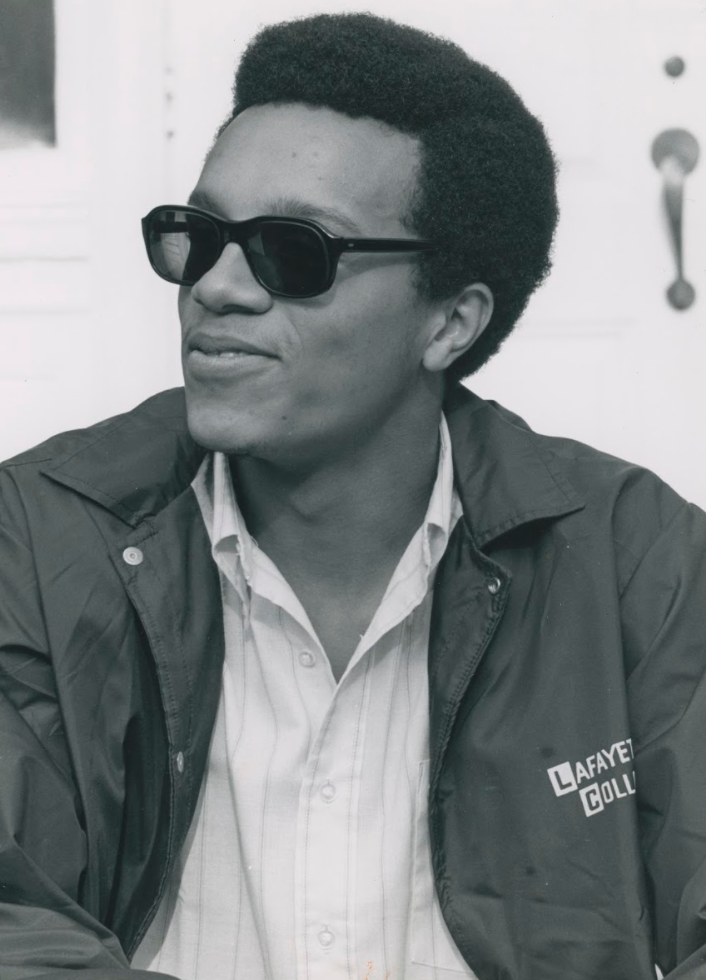
When I first began this project I had a very different goal in mind. I thought I would be simply analyzing data about Black spaces at Lafayette. Then, I realized that I wanted to look at the institution at large and how the change in spaces affects larger policies of diversity and inclusion. While doing my original annotated bibliography I realized I felt a disconnect to where my project, and the sources I had gathered in relation to processing the data. After, doing some other readings I realized what I actually wanted to look at is the social geography at Lafayette College. Certain spaces at Lafayette College are racialized which further affects what Black and brown spaces look like at Lafayette College overtime. Overall, my goal is to analyze the social geography of Lafayette College as an institution, and further assess how physically racialized spaces affect how Black and brown students experience them, and what physical spaces they actually have access to.
In order to further study this I have looked at several academic sources about the social geography of institutions. Before I could analyze Lafayette College I first had to understand how I can understand Lafayette College as a racialized space, and what that further means. I also looked at sources from intersectional feminists, because the theory of social geography within itself is very racialized. In order to make sure that I am able to look at Lafayette College through this analytical framework. After, realizing that I was able to specify how I wanted to study Lafayette College as a space. In relation to my data, collected from ABC archives, I first organized my data on a Google document. Afterwards, I was able to transfer the data into an Excel spreadsheet to make it easier to map. After recording my Data I had realized that it was not organized enough, so I have spent some time breaking my data down into smaller pieces, so that larger themes are easier to understand.
Throughout the duration of this project I used the Association of Black Collegians (ABC archives) in order to retrieve my data. Along with that I have used the work of previous ABC archive members in order to really build a strong foundation for my data. In order to organize my sources I used an excel spreadsheet. This assisted me in organizing my data for the digital StoryMapJS Knight Lab. (See the Black Spaces at Lafayette College StoryMap here.)
Twitter and Black Film and Anti-Black Sentiment – Dawit Gebeta ’21
Platforms and Tools used: Twint
Description forthcoming.
Class of 2019
Defining “Transgender” – Bec Stargel ’20
Platforms and Tools used: GitHub, Google Scholar, HTML5 UP, Publish or Perish, Timeline JS, Voyant
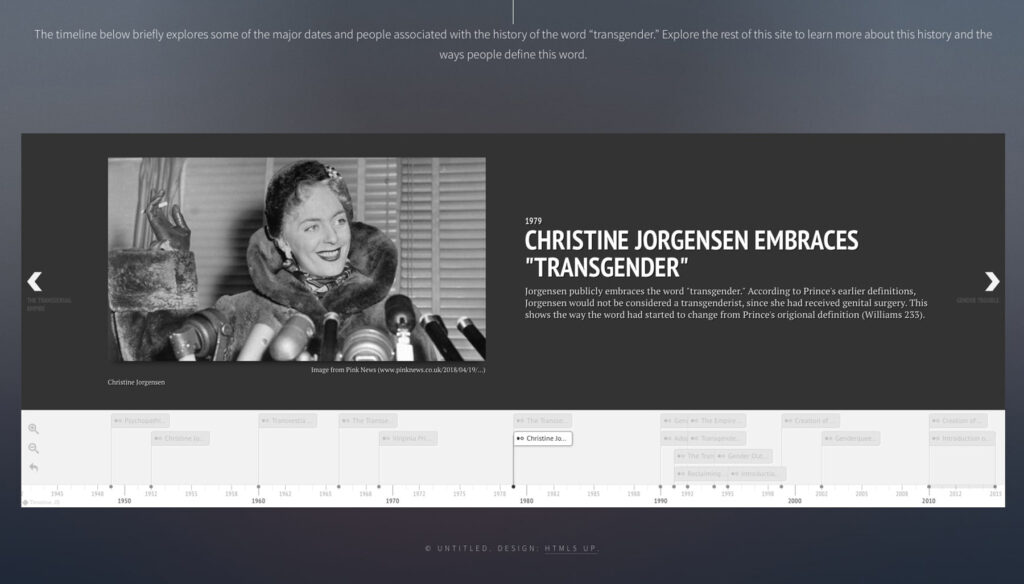
As can be seen in the number of letters in the LGBT(QUIA+) acronym, there is an abundance of language, labels, and identities associated with this community. This language is not only vast, but constantly changing; words that used to be widely used and accepted, such as transsexual, are now often viewed negatively, while words like queer have been reclaimed by many. In a context where labels are so important, where they can give not only a name but also a sense of community for those who choose to use them, exploring the history behind these labels is valuable.
At the beginning of this six-week intensive research project, I didn’t know exactly what I wanted to do, but I knew that I wanted to explore the creation and evolution of these words, specifically those words surrounding trans* identities. After a lot of thinking and reading, I finally landed on a set of questions to explore. How was the word transgender first introduced? How has it changed since then? And how exactly are people defining this word?
Disarmament in South Sudan – Victoria Puglia ’21
Platforms and Tools used: Adobe Premiere Pro, ArcGIS, Tiki-Toki Timeline Maker, Video Scribe, Visme, Wix
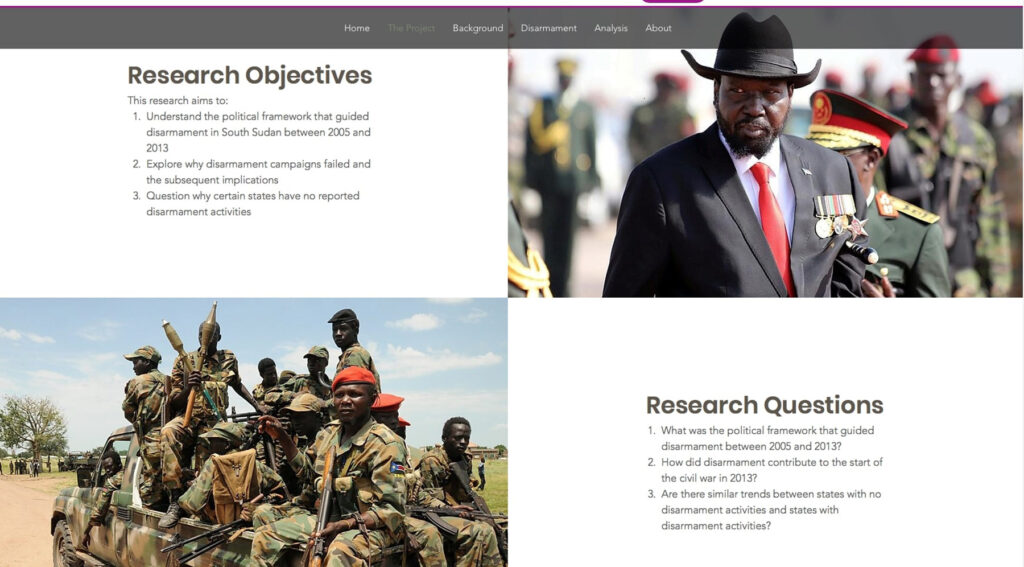
I decided to explore the disarmament campaign in South Sudan as well as the role of disarmament in the perpetuation of violence in South Sudan. While there is literature on disarmament initiatives and the failures of disarmament, there is a lack of research on the implications of that failure. The literature also focuses more on analysing the outcome of disarmament rather than on the process that took place in the interim period between 2005 and 2011, and before the civil war in South Sudan broke out in 2013.
Ultimately disarmament in South Sudan failed in the period between 2005-2013. It is important to understand the failures of disarmament and the implications to avoid making the same mistakes when the South Sudanese Civil War eventually comes to an end. Furthermore, this study will explore the relationship between geography and disarmament, which is an analysis distinct to what currently exists in the literature.
Hindu-Buddhist Architecture in Angkor City – Aidy Ung ’21
Platforms and Tools used: ArcGIS, Esri Story Maps, Voyant (TermsBerry, Collocates)
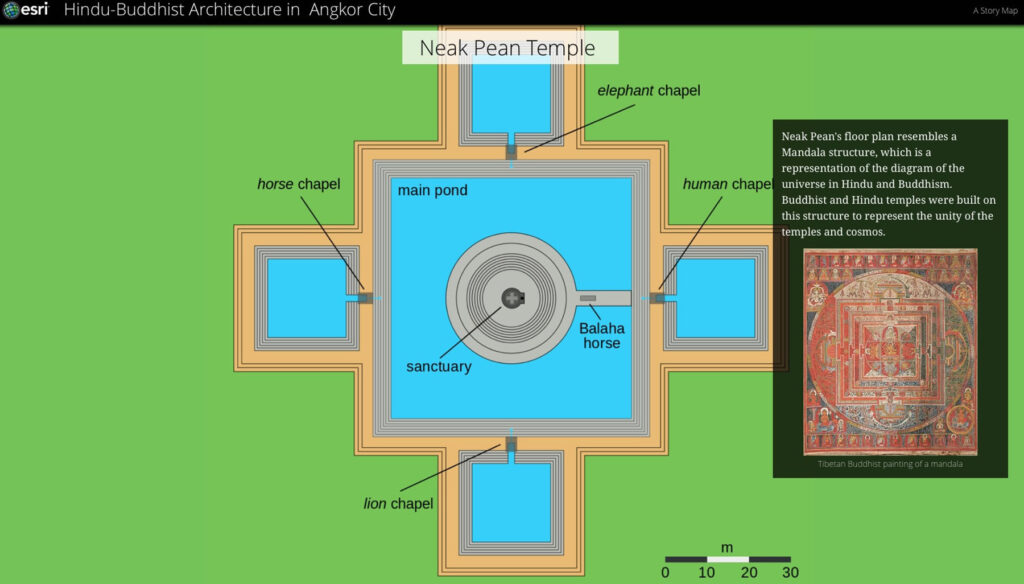
Angkor is the capital city of the Khmer Empire, a powerful state in Southeast Asia from the 9th to 15th century and is the predecessor state of what is now Cambodia. This Empire covered most of the present mass land of Cambodia, Lao, Thailand, and the South of Vietnam.
The city of Angkor was prioritized to be a service of God rather than a service of men (Van Liere), making religious monuments very significant feature of the city. Many temples were built to symbolize Mount Meru, the home to Hindu Gods and connecting heaven and earth. The moat surrounding the temple represents the cosmic ocean. Temples were built according to the calendar, religious cosmology, and astronomy to make them sacred and to symbolize the union of the King and the divinity.
Household Electrification and Education Performance in Madagascar – Tafita Rakotozandry ’22
Platforms and Tools used: ArcGIS, Esri Story Maps
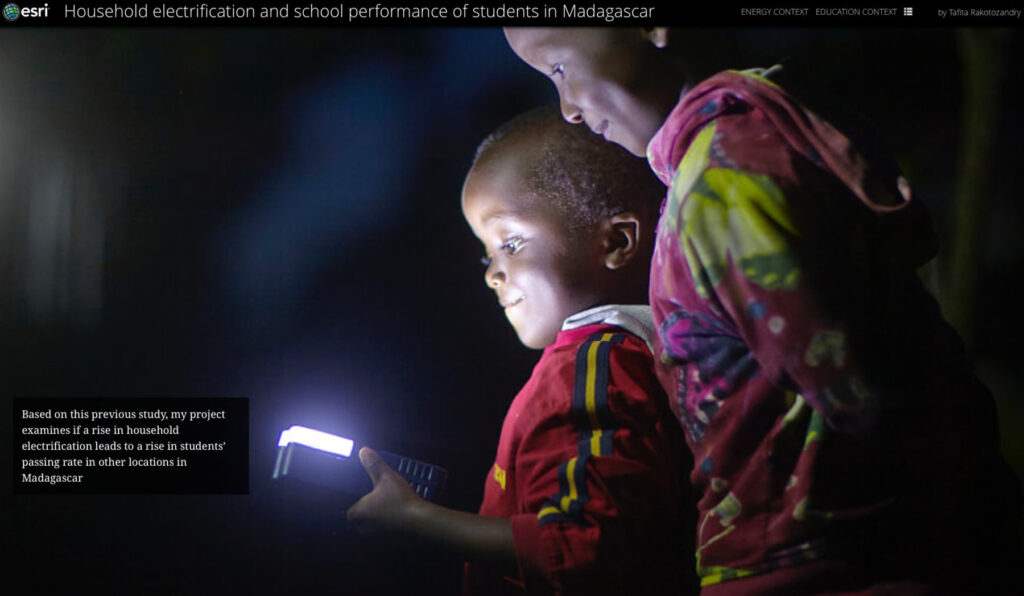
Their findings proved that kids who were raised in electrified households have more time to focus on their study at night and as a result, they performed better in school. This seems like a logical conclusion because, with a population whose traditional life includes no access to electricity, daily life activities depends on the solar cycle. However, after the arrival of technology, nighttime becomes more viable as activity time
For female students especially, it is also a big life improvement because they will have more time to commit to their study. Effectively, female students are more likely to be subjected to do housework compared to boys. Their duties include to fetch water for the family, help the mother to cook, take care of the babies, etc… With a longer time to study, they can focus more on their school assignment and be more successful in class. In other words, home electrification leads to less gender inequality in term of education.
Labor Rights Considerations in eSports: A Policy Analysis of North American League of Legends & Riot Games – Joseph Illuzzi ’21
Platforms and Tools used: Github, HTML5 UP, Timeline JS
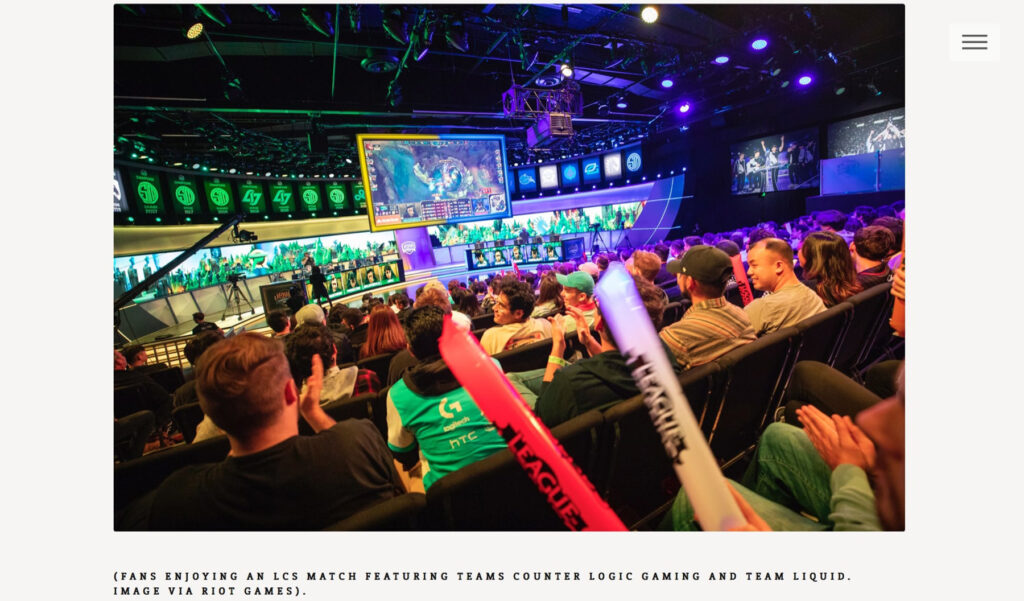
This project seeks to showcase the issues that professional eSports players face, focusing on the professional North American League of Legends scene as a case study. The struggles players face in terms of unionization, employee classification, asymmetrical market information, unjust competitive rulings, and related topics will be emphasized.
The Mosaic of Romani World – Milena Berestko ’22
Platforms and Tools used: Roma Online Visual Tool, WordPress
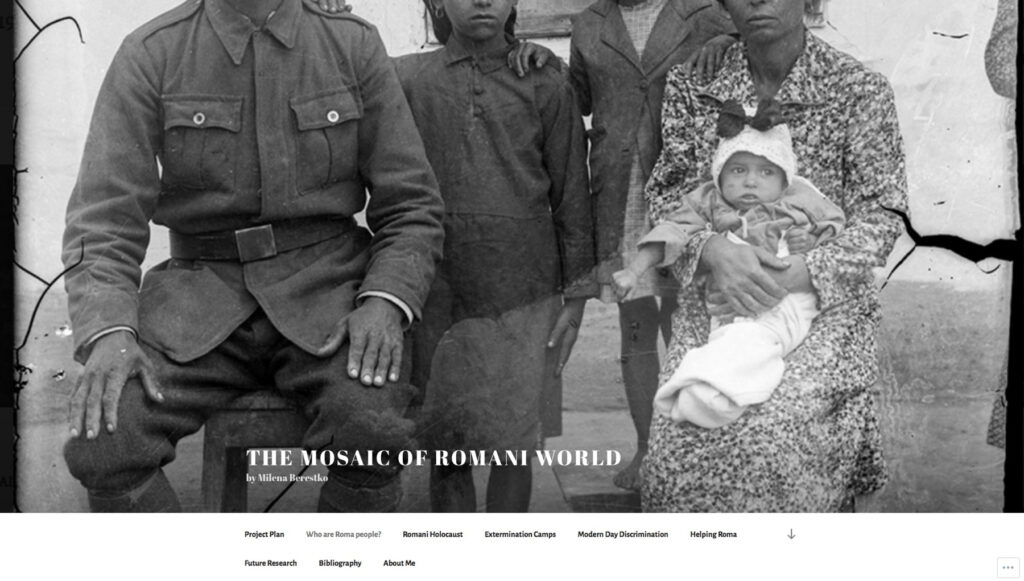
Called “Gypsies” for centuries, their proper name are Roma people. “Gypsy” signifies a ‘descendant from Egypt, with that being said, the moniker “Gypsy” is a derogatory, and an inaccurate term to describe Romanies and thus should be avoided. The word “Gypsy” will not appear in this website outside the historical sources and other references that date before the establishment of the First Romani Congress in 1971 that put front a demand to internationally address Roma by their true name (Puxon, n.d).
I have begun my research with the question: “How did Roma people influence the Polish legislature and art?”. I soon realized that there is little to no literature that explores the impacts of Roma in countries they reside, instead, scholars discuss their marginalization and present them as a distinct group of people diverting from the societal norm. In writing, many exoticize Roma and examine their poverty looking at them as vanguards of the community. Regarding Romani history, one of the most widely discussed topics is Parrajmos, (“the great devouring”; the Romani Holocaust). Information about Roma in the Holocaust is often discovered by Jewish scholars. There are only a few Roma representatives in the historical field that openly challenge the stereotypes imposed on Roma and correct the misinformation existing in the literature. One of those prominent scholars is Ian Hancock, who speaks about the Romani Holocaust, belonging to Roma nation, and addresses the differences in ‘nation-hood’ between different Roma tribes.
Upon reading documents decreed in Nazi Germany in the years 1933-1945, I wanted to analyze the particular laws produced to annihilate Roma and investigate their contribution to modern-day discrimination. Unfortunately, I could not access the original transcripts of the documents thus I decided to aggregate the information I found about Roma people and address the current gaps in the literature. I hope that this project will serve as an overview of issues and critical topics to ponder if one wants to go into the field of Romani studies and expand upon the limited knowledge we have about this ethnic minority.
66 Images of Tokyo: Postcards from the Magazine Shufu no Tomo (主婦の友) – Ren Makino ’20
Platforms and Tools used: ArcGIS
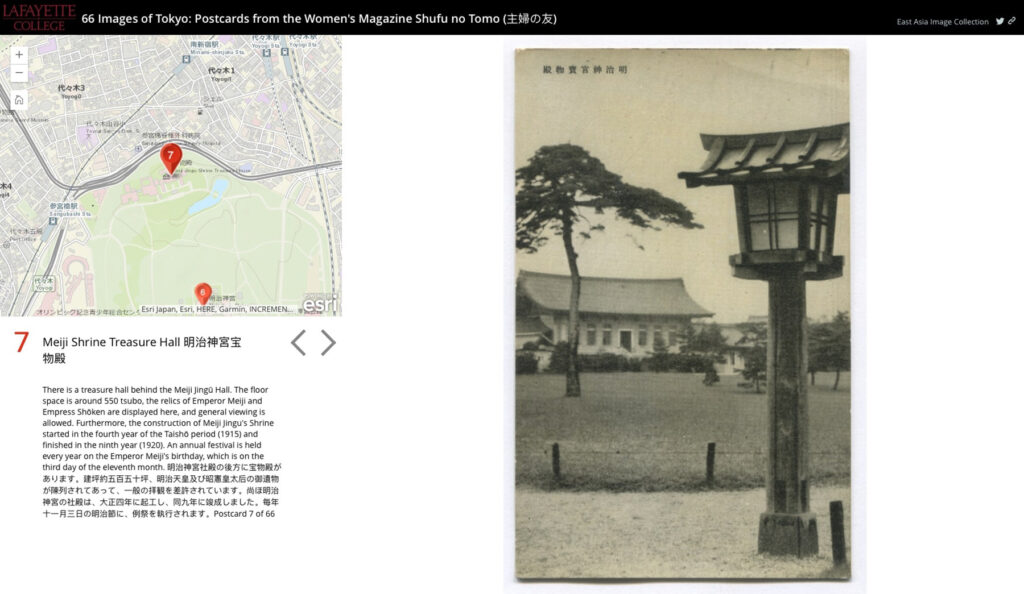
This set of postcards came as a ‘special gift’ (付録) with the September 1932 edition of the magazine Shufu no Tomo (主婦の友, 1916-2018). As the title translates to Housewives’ Companion, the magazine was targeted towards young, urban, middle-class housewives but was also enjoyed by factory workers and those from rural areas. Each postcard was assigned a number from 1-66; the number is reflected on the red points. Points 67-70 in purple are the advertisement cards that came with the set and point 71 in blue is a short conclusion for this project. In the text box for each point is the English translation of the description from the back of the postcard followed by the original Japanese description. This project is an example of how postcards, including those already in Lafayette College’s East Asia Image Collection, can be displayed on a digital map.
1/24/20 PROJECT UPDATE: Ren visited 60/66 of the postcard locations from his digital research project over the holiday break. He is working on updating his website with the images of the current locations. Right now, the image comparisons can be seen in a rough format here.
Class of 2018
Communication Deficits Between Fields Integral to the Epistemology of Sentiment Analysis – Norman Lee ’19
Platforms and Tools used: Gephi, Scalar
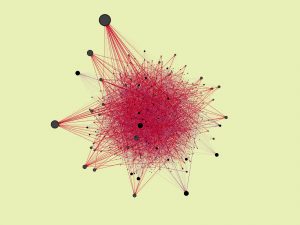
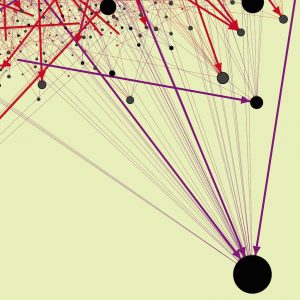
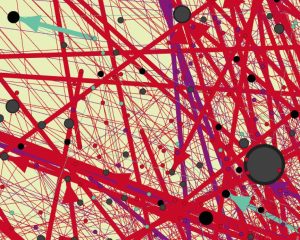
One of the core questions within the Digital Humanities analysis of social media is how to extract social attitudes from the target media without close reading. However, in order to answer this question, it seems we need to answer two others: what is a social attitude and how is it instantiated in social media? Answers to these two questions may inform researchers about the development and characteristics of public moods (long term vs. short term, high amplitude vs. low amplitude) as well as their distribution and interaction throughout different social medias (academic social medias vs. more popular social medias).
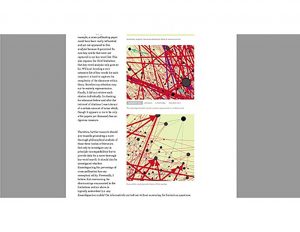
Answers to these questions would, in turn, increase the accuracy of Digital Humanities analyses of public attitudes by allowing for a principled way to create more precise research questions as well as extract and apply the implications of their answers. Plausibly, ontological analysis also provides complimentary utility to linguistic analysis by giving us the basis to discover information about idiosyncratic use of interesting terms within populations (for example, how different is usage of the same academic terms in academic circles vs. the news that reports them) and their variations on possible sentiment spectrums (for example, high affect may have a different implication on twitter or Facebook vs. in business correspondence).
Intersection of Hybrid Identities in Ocean Vuong’s Diasporic Poetry – Trang Le ’21
Platforms and Tools used: GitHub, HTML5 UP, Voyant (MicroSearch, TermsBerry, Trends)
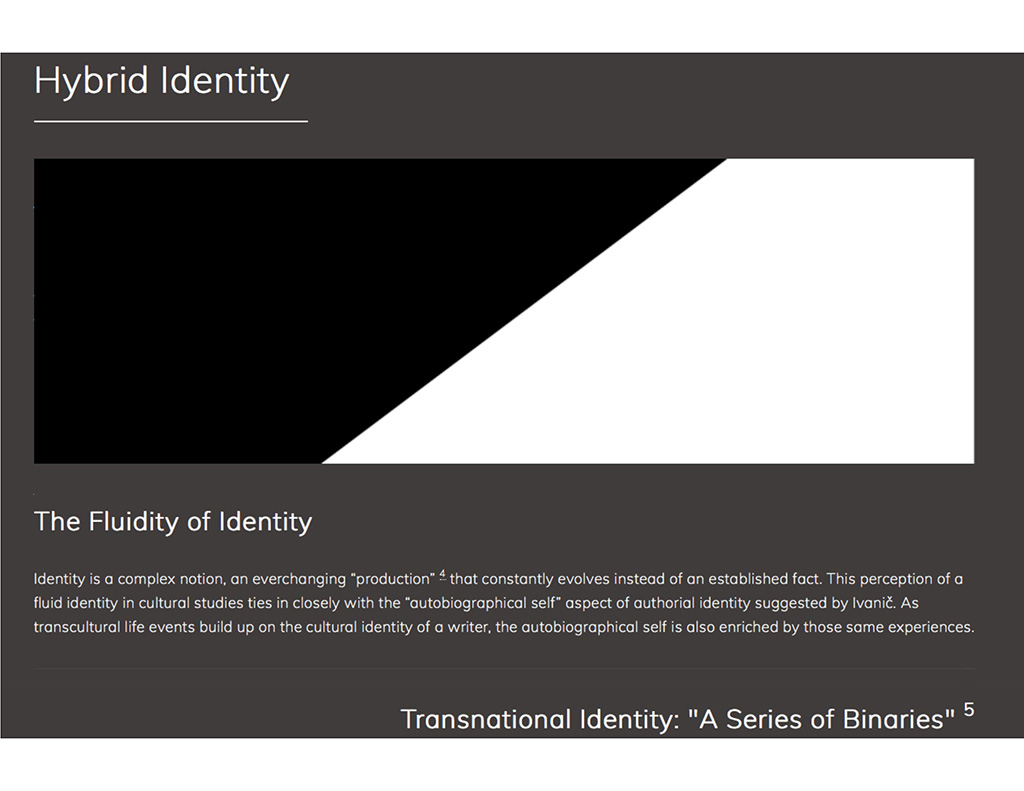
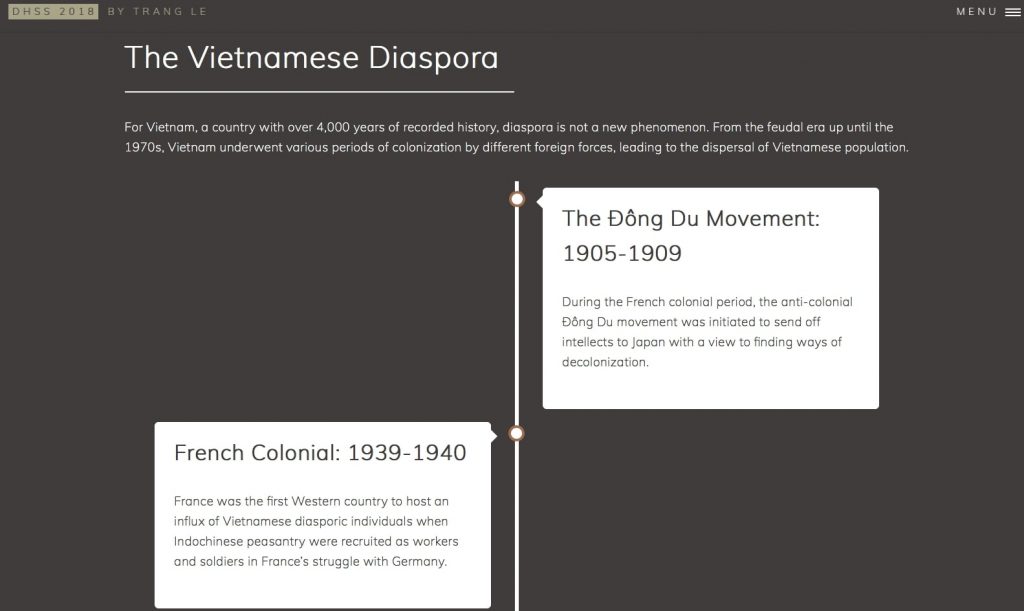

Authorial identity in the written discourse is defined by textual features of the writings as well as personal beliefs and perceptions of the writer about social values. The purpose of this research is to delineate the authorial identity of Vietnamese-American writer Ocean Vuong through research of his life history and textual analysis of his poetry collection, Night Sky with Exit Wounds.
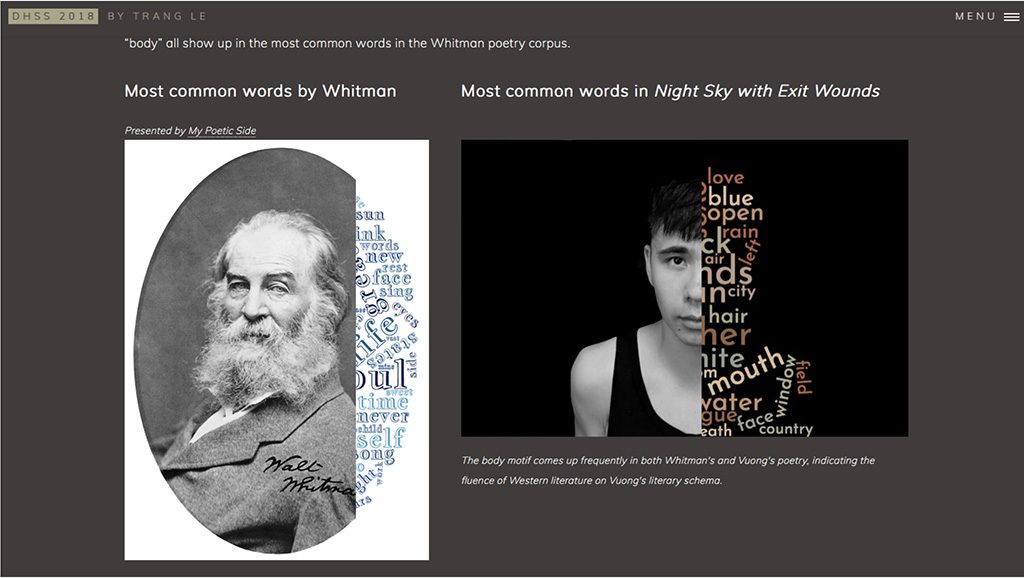
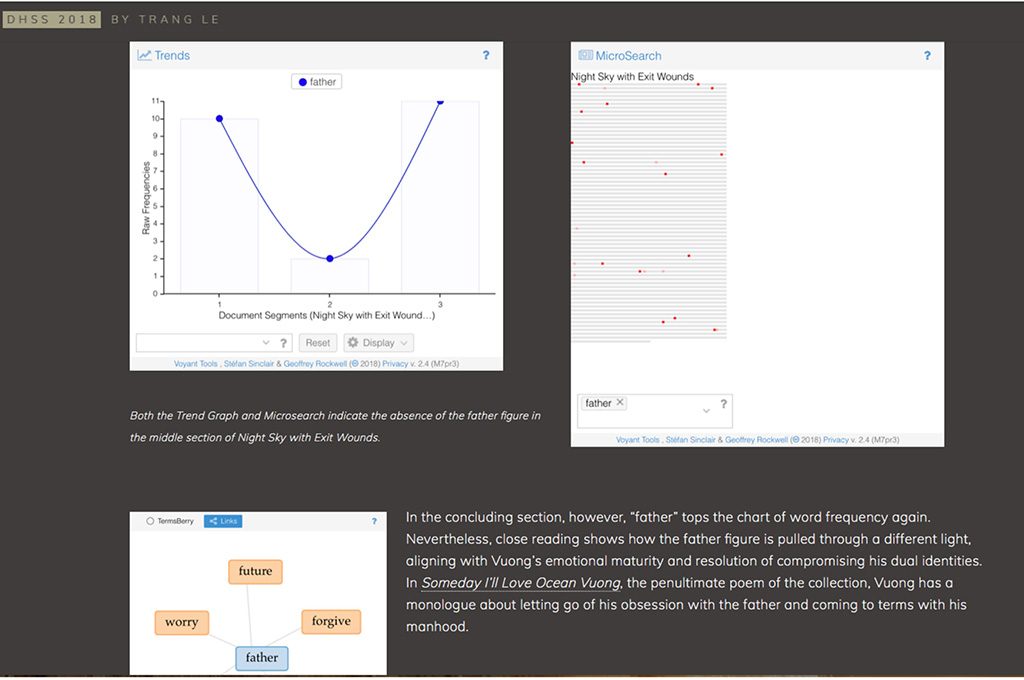
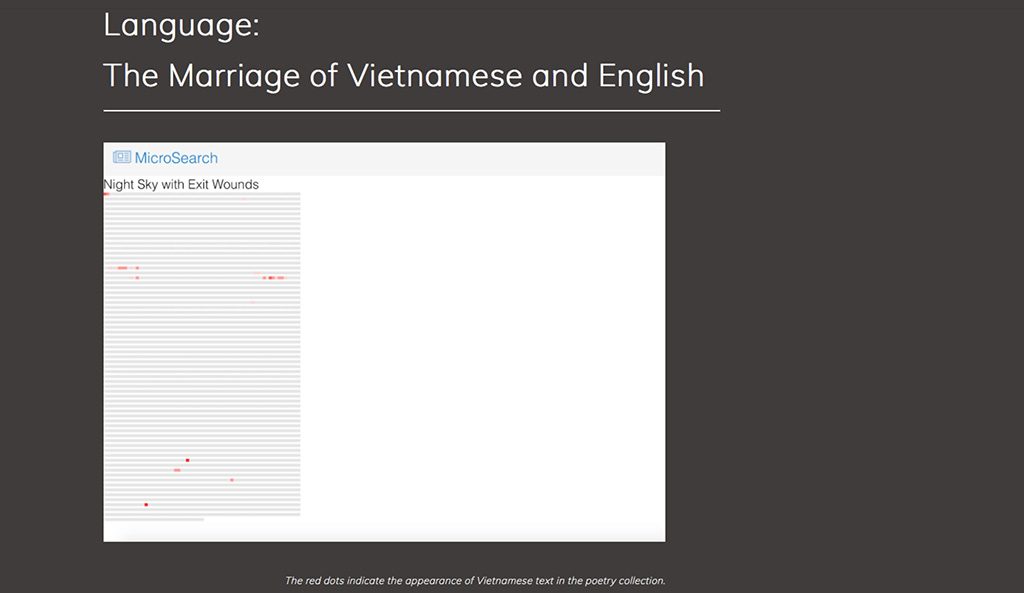
Traditional close reading of the poetry collection was supplemented by distant reading of diction trend, word frequency, and data visualization using Voyant, an online text analysis website. Final findings along with analysis discussion of the results were presented in the digital format of an online website.
Making of Ethnic Nationalism – Elene Jalagonia ’20
Platforms and Tools used: ArcGIS, Voyant (SteamGraph)
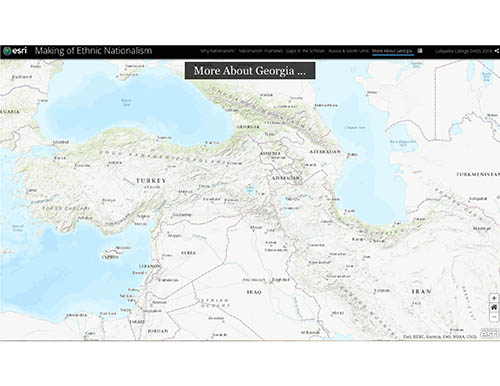
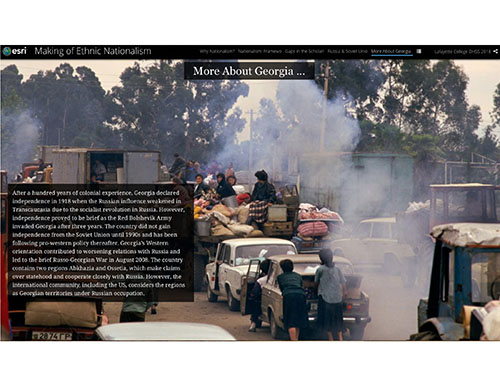
The question of nationalism has been overlooked in political science and philosophy as a relic from the past and the characteristic of the old nation-states. Nationalism began attracting scholars’ attention in the late nineties when the nationalist conflicts in the former Yugoslavia, Post-soviet states and Rwanda resulted in the massive loss of lives and displacement of thousands of people. The question remains relevant even today as we observe the unexpected surge of populism and nationalist tendencies across the globe, which promote seclusion and othering of the distinct ethnic groups and nations, simultaneously, hampering international economic, cultural and political interconnectedness.
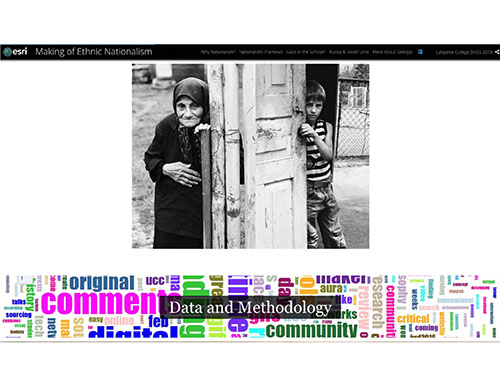
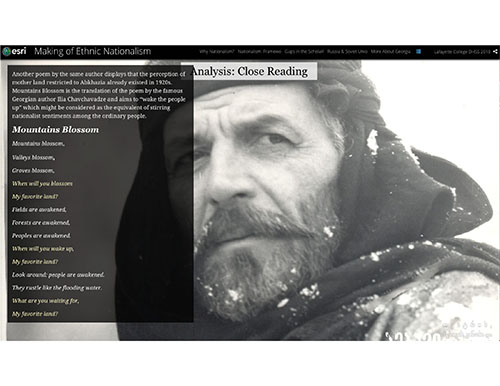
This project sheds light on the nature and formation of an ethnic nationalism in post-colonial and post-communist spaces based on a case study from Abkhazia, a breakaway region in Georgia. It aims to trace the development of the nationalist sentiments among the ordinary Abkhaz people and examine the ideological discourse led by the external colonizing power, the Russian Empire and the Soviet Union.
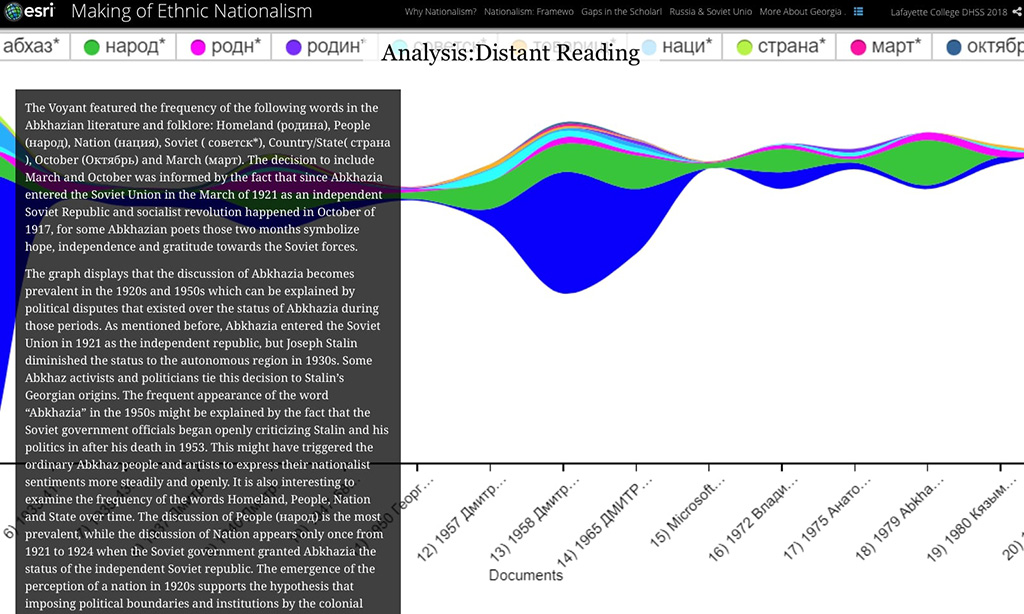
Therefore, the project employs digital tools to answer two basic questions: how the nationalist sentiments developed in the Abkhaz public discourse? and is there any evidence for the existence of the colonizer’s discursive ethnic politics which might have contributed to the emergence of a new nationalism in the colonized state?
New York City’s Subways, Bridges, Highways, and Expressways in the 20thCentury – Ben Gordon ’19
Platforms and Tools used: ArcGIS, Esri Story Maps
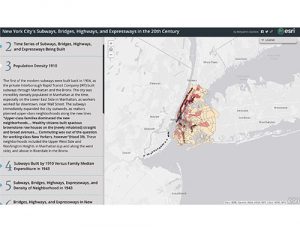
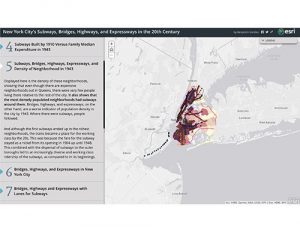
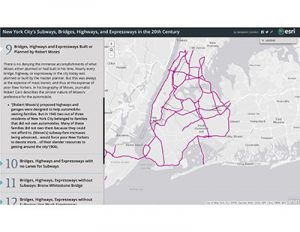
New York City has a subway problem. The famed mass transit system that has received much literature and love from many New Yorkers over its 100 plus year history is now the recipient of scrutiny from the city’s residents and newspapers. A New York Times investigation found that the New York subway system has the worst on time performance of any major rapid transit system in the world, at 65%. Yet subway ridership is at its highest since the 1940’s, as more people than ever rely on their services to get from place to place. As the city plans to fix and repair what is causing these issues, the historical context for the subways is as important as ever to understand.
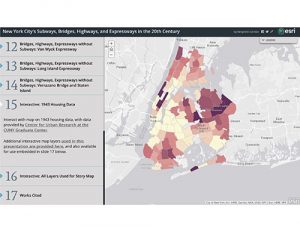
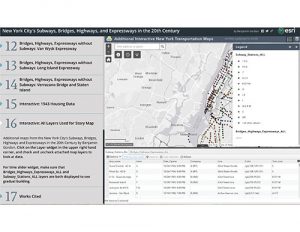
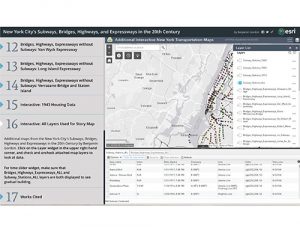
Why, for example, are there parts of the city that are overrepresented by train lines versus others that have very few? Because this is American history, is there a connection between race and socioeconomic class with the location of subway lines? Within the history of mass transit and urban planning in New York, public policy emerges that has shaped why the subways are the way they are today, especially policy of the famous master builder of New York, Robert Moses. I propose mapping both the building of the subways and Moses’s highways, bridges, and parks alongside city demographics at their respective times to investigate how race and class influenced the city’s decisions.
Uncovering the Political History of the New York City Subways – Lafayette College News video, October 30, 2018:
Ben Gordon ’19 talks about his digital humanities research on the development of New York City’s subway system, particularly how subway locations were determined and why the city stopped investing in them.
Racial Perceptions of Anime in the United States– Uchechi Anomnachi ’19
Platforms and Tools used: Rap Stats by Rap Genius,Timeline JS, Tumblr, Voyant (Cirrus)
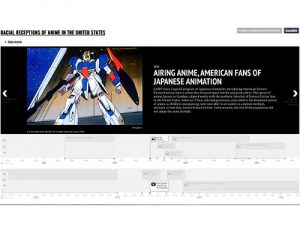
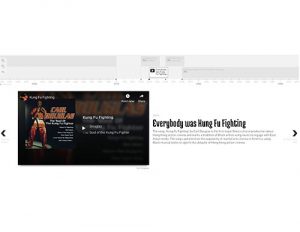
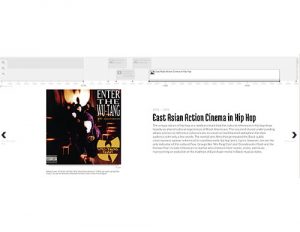
I uncovered two distinct histories of the diffusion of anime into the United States: one for Black Americans, and another for white Americans. The central question I sought to answer is: how do these different traditions of consuming anime inform how these populations understand and regard anime? To answer this I studied the unique cultural productions of these groups with regard to anime, hoping to uncover larger trends that relate back to the established historical context of their consumption. In establishing such a historical context I connect white anime consumption in America back to science fiction fandom in the 1960s and 1970s and find that being born from that tradition, many of their cultural productions were the same.
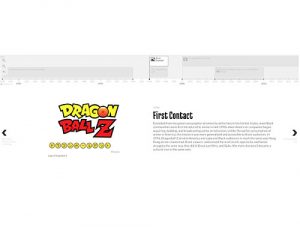
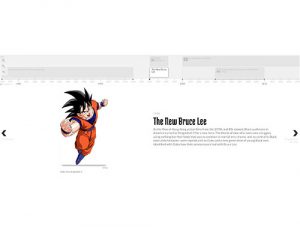
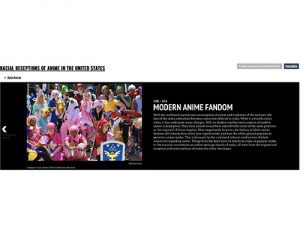
Fan-zines, conventions and club bulletins became central to how white fans engaged with anime similar to their role amongst science fiction fans. I also trace the feminized ‘nerd’ stigma that was attached to both of these groups in the public consciousness as a result. For my analysis of white cultural productions surrounding anime, I chose to focus primarily on fan-zines and bulletins as they provided a rich body of texts and connected directly back to their science fiction predecessors. I trace a different history for Black anime consumption relating back to the eminence of Hong Kong action cinema, Samurai films, and other East Asian media in the Black community.
I found that hip hop became a major site where Black people engaged with these styles, differentiating their consumption from that of white fans in a few major ways. I analyze hip hop lyrics to construct my argument about these distinct ways anime consumption manifests in the Black community. What was striking was how these different traditions of consumption of Anime are so intimately connected to discourses of masculinity and femininity, isolation and community.
Racial Perceptions of Anime– Lafayette College News video, February 24, 2019:
Uche Anomnachi ’19 talks about his research, sponsored by the Lafayette Libraries’ Digital Humanities Summer Scholars program, on the differences in how black and white Americans have responded to the Japanese artistic medium of anime.
Travel Writings of Jerusalem in the Middle Ages – Angela Shi ’21
Platforms and Tools used: AntConc, MALLET, RAW Graphs, Voyant, WordPress

Video Introduction produced by Angela Shi
My digital humanities project focuses on how the Muslims were depicted in the travel writings of European non-Muslim travelers to Jerusalem in the Middle Ages. Because of the significance of Jerusalem to Latin Christianity and the fact that it was dominated by Islamic authority from the 700s to the 1500s, European travel writings of Jerusalem could serve as a lens through which we examine the religious and cultural interactions between followers of medieval Christianity and Islam, the two most “antagonistic” Abrahamic religions throughout history. Also, seeing how travel writings have connected the Crusades to Jerusalem and also how, on the other hand, they indicate an increasingly self-reflective perspective of the writers could shed light on the religious and intellectual lives of the medieval Latin Christians that gave rise to the humanist movement of Renaissance and further modernization of Europe.


Volatica – Alex Murrell ’19
Platforms and Tools used: MALLET (jsLDA), Omeka
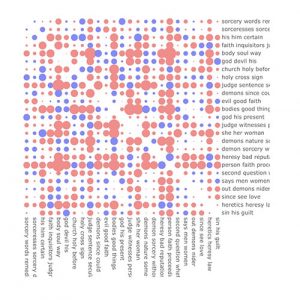
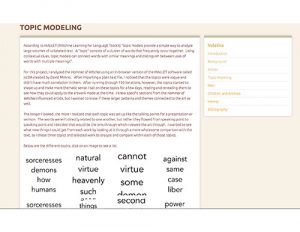
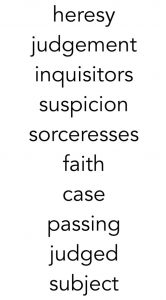
Volatica is an ongoing project working to compare the artwork surrounding the witch trials with major texts and treatises from the era. As of June 2018, the project utilizes the Malleus Maleficarum and work from Albrecht Dürer, Hans Baldung, Johann Otman, Erhard Schoen, and Francisco Goya to gain insight into the works themselves, the attitudes of the public, and the political climate surrounding the witch trials.
Beginning in the late 14th and early 15th centuries, central Europe found itself in a state of growing hysteria as the tenets and values of the Catholic Church were called into question by early reformers like Jan Hus, a Czech theologian, and Girolamo Savonarola, an Italian Dominican friar.Several members of the Catholic Church, including Pope Innocent VIII, felt one reason for the growing undercurrent of heresy in the masses was caused by willing and unwilling collusion with the Devil and his subordinates.
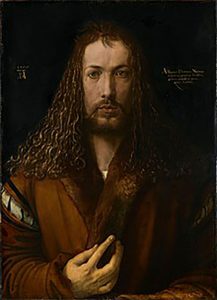
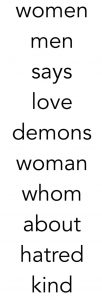
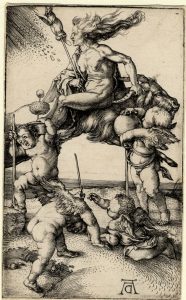
An immediate response to this incursion of heretics was Heinrich Kramer and Jacob Sprenger’s treatise Malleus Maleficarum: The Hammer of Witches. The full Latin title is Malleus Maleficarum, Maleficas, & earum hæresim, ut phramea potentissima conterens.
The Hammer of Witches made an incredible impact on the literate and powerful, but the literacy rate in Europe was so low at the beginning of the 15th century, and in some southern and eastern areas until the mid-19th century, that the general population would not have had enough independent exposure to the text to cause hysteria. So the question becomes: what caused the general population, beginning in Germany, to become so frantic about witchcraft and sorcery in their communities?
Class of 2017
Somali Refugee Secondary Migration- Maine and Minnesota
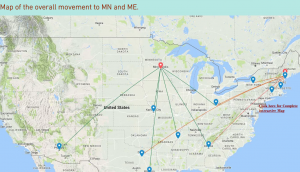 Fleeing home as result of the horrific results of the civil war, many Somalis ended up in refugee camps or were resettled in other countries as refugees. The United States is one of the countries that offered third country resettlement to Somali refugees. After their initial placement, Somali refugees in the United States tend to live or move to places like Maine and Minnesota as secondary migrants. This project explores the leading causes why Somali refugee secondary migrants move. By looking in to the personal stories of selected Somali refugees, this project shows recurring reasons that lead to Somali refugee secondary migration.
Fleeing home as result of the horrific results of the civil war, many Somalis ended up in refugee camps or were resettled in other countries as refugees. The United States is one of the countries that offered third country resettlement to Somali refugees. After their initial placement, Somali refugees in the United States tend to live or move to places like Maine and Minnesota as secondary migrants. This project explores the leading causes why Somali refugee secondary migrants move. By looking in to the personal stories of selected Somali refugees, this project shows recurring reasons that lead to Somali refugee secondary migration.
Tracking and Explaining the Sephardic Diaspora
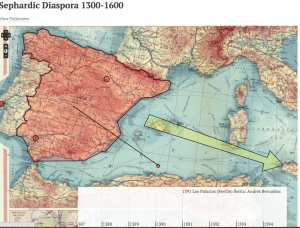 In 1492, the Spanish Inquisition officially started marking the beginning of the expulsion of Jews from Iberia. As a result, Spanish Jews were forced to either convert to Christianity, flee their homes, or face persecution. This project tracks the migration of Spanish Jews from Iberia to the Ottoman Empire, the most common destination for Jewish refugees. The central substance of this investigation is a mapping that not only illustrates the Sephardic migration, but also tells the story of tolerance. Through displaying primary source accounts that describe the events or circumstances of a specific location and date, this map not only investigates the difference between Judeo-Christian and Judeo-Islamic tradition that materializes, but also explains why this difference existed.
In 1492, the Spanish Inquisition officially started marking the beginning of the expulsion of Jews from Iberia. As a result, Spanish Jews were forced to either convert to Christianity, flee their homes, or face persecution. This project tracks the migration of Spanish Jews from Iberia to the Ottoman Empire, the most common destination for Jewish refugees. The central substance of this investigation is a mapping that not only illustrates the Sephardic migration, but also tells the story of tolerance. Through displaying primary source accounts that describe the events or circumstances of a specific location and date, this map not only investigates the difference between Judeo-Christian and Judeo-Islamic tradition that materializes, but also explains why this difference existed.
Depicting Disability on Reality Love Television
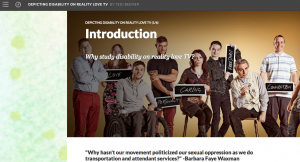 Love and dating reality television hardly provides an accurate or diverse slice of its represented population. The average American reality show features a cast far whiter, more upper-class, more able-bodied, and more attractive than a truly random populous sample would produce. Disability, underrepresented on all forms of television, is depicted in a similarly disappointing fashion on reality love television. Those with disabilities are underrepresented, misrepresented, and exploited on these television programs which, in turn, perpetuate stereotypes about disabled aromanticism and asexuality. This project explores the importance of representation and the power of media while tackling troubling myths about disability.
Love and dating reality television hardly provides an accurate or diverse slice of its represented population. The average American reality show features a cast far whiter, more upper-class, more able-bodied, and more attractive than a truly random populous sample would produce. Disability, underrepresented on all forms of television, is depicted in a similarly disappointing fashion on reality love television. Those with disabilities are underrepresented, misrepresented, and exploited on these television programs which, in turn, perpetuate stereotypes about disabled aromanticism and asexuality. This project explores the importance of representation and the power of media while tackling troubling myths about disability.
A Comparative Study on How White Working Women are Portrayed in Advertising
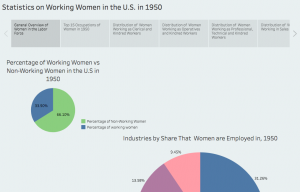 We are living in an advertising world. Advertisements are on magazines we read through, smartphones we scroll through, and billboards we pass by. It is how companies and products connect with customers and generate revenue. Therefore, how women are portrayed in advertisements is crucial in how femininity is constructed and defined. This project looks at post-World War II and today and how portrayal of white working women has changed over the last 70 years.
We are living in an advertising world. Advertisements are on magazines we read through, smartphones we scroll through, and billboards we pass by. It is how companies and products connect with customers and generate revenue. Therefore, how women are portrayed in advertisements is crucial in how femininity is constructed and defined. This project looks at post-World War II and today and how portrayal of white working women has changed over the last 70 years.
Stratification as a Public Policy in Bogota, Colombia
Stratification (estratificación socioeconómica) is a public policy developed in Colombia that classifies residential areas into strata through physical appearance. The purpose of this policy is to subsidize the cost of domiciliary public utilities for the low-income population (strata 1, 2, 3) using the contributions of the high-income population (strata 5, 6). This article examines stratification and many of its unintended consequences in Bogotá and lays down a framework in visualizing the history, causes and consequences of this controversial policy through the development of a digital project using ESRI’s Story Maps.
How Swedish Policies Impact Sami Indigeneity in Sweden
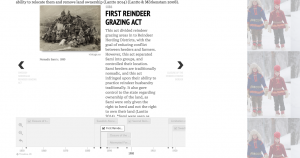 Around the world, indigenous peoples are marginalized in terms of their identities, histories, and abilities to exercise and produce their cultures. The Sami are a group of people indigenous to four countries in Northern Europe: Norway, Sweden, Finland, and Russia. In Sweden, legislation regarding Sami rights such as reindeer husbandry and education have created a policy of exclusion and separation of Sami. These policies reflect a perception of Sami culture that is limited to only 10% of the true Sami population. This lack of broad understanding and form of categorization leads to stereotyping of Sami people and impacts their well being and authority over their own identities. This project looks at the way Swedish policies categorize Sami and create perceptions of Sami culture and identity.
Around the world, indigenous peoples are marginalized in terms of their identities, histories, and abilities to exercise and produce their cultures. The Sami are a group of people indigenous to four countries in Northern Europe: Norway, Sweden, Finland, and Russia. In Sweden, legislation regarding Sami rights such as reindeer husbandry and education have created a policy of exclusion and separation of Sami. These policies reflect a perception of Sami culture that is limited to only 10% of the true Sami population. This lack of broad understanding and form of categorization leads to stereotyping of Sami people and impacts their well being and authority over their own identities. This project looks at the way Swedish policies categorize Sami and create perceptions of Sami culture and identity.
A Critical Edition of To Pimp A Butterfly
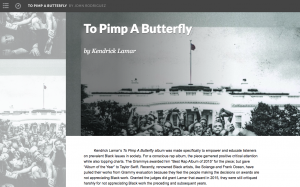 Too often gangsta rappers are labeled as the catalyst for death and poverty in their communities. However, gangsta rappers actually expose the social issues and narratives from their respective communities in order to reveal the harsh realities of America that tend to be ignored. Kendrick Lamar used his album To Pimp A Butterfly to give positive and enlightening messages to Black people, while also critiquing the government for its hypocrisy and biased legislation. This project aims to unpack overarching themes and provide scholarly evidence to support his claims in the album.
Too often gangsta rappers are labeled as the catalyst for death and poverty in their communities. However, gangsta rappers actually expose the social issues and narratives from their respective communities in order to reveal the harsh realities of America that tend to be ignored. Kendrick Lamar used his album To Pimp A Butterfly to give positive and enlightening messages to Black people, while also critiquing the government for its hypocrisy and biased legislation. This project aims to unpack overarching themes and provide scholarly evidence to support his claims in the album.
Afro-Jamaican Working Class Women in Dancehall Spaces
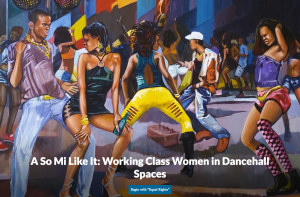 The verdict on dancehall as a space of empowerment for working class women is always in contention depending on whom you ask. For some, it is a space that unrelentingly denigrates women. For others, it is a space for feminist liberation. The truth, however, is somewhere in between. The space’s duality forces us to reckon with the complexity of histories of colonial violence, globalization, and diaspora and the way they play out in cultural expression. Using Afro-Caribbean and other black feminist schools of thought, this project aims to challenge simplistic representations of dancehall as only (dis)empowering for Jamaican working class women by examining moments within the space that speak to the complex manner in which their daily lived experiences manifest. I am interested in alternatively arguing for what I call a politics of negotiation.
The verdict on dancehall as a space of empowerment for working class women is always in contention depending on whom you ask. For some, it is a space that unrelentingly denigrates women. For others, it is a space for feminist liberation. The truth, however, is somewhere in between. The space’s duality forces us to reckon with the complexity of histories of colonial violence, globalization, and diaspora and the way they play out in cultural expression. Using Afro-Caribbean and other black feminist schools of thought, this project aims to challenge simplistic representations of dancehall as only (dis)empowering for Jamaican working class women by examining moments within the space that speak to the complex manner in which their daily lived experiences manifest. I am interested in alternatively arguing for what I call a politics of negotiation.
Class of 2016
State Machinery of the Islamic Republic of Iran
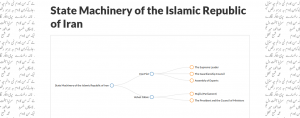 The current political establishment in Iran is an astute combination of post-revolution political institutions that reflect the ideals of the clergy, particularly of Ayatollah Khomeini, and the pre existing political institutions. The Islamic regime in a masterful move of statesmanship managed to accommodate these two sets of institutions under one system. This project attempts to explain the decision making within Iran’s highly complex power structure by introducing a fresh “Iron Fist/Velvet Glove” conceptualization to understand it. The study utilizes original translations of the Constitution of Iran to classify the institutions as belonging to Iran’s Iron Fist or her Velvet glove.
The current political establishment in Iran is an astute combination of post-revolution political institutions that reflect the ideals of the clergy, particularly of Ayatollah Khomeini, and the pre existing political institutions. The Islamic regime in a masterful move of statesmanship managed to accommodate these two sets of institutions under one system. This project attempts to explain the decision making within Iran’s highly complex power structure by introducing a fresh “Iron Fist/Velvet Glove” conceptualization to understand it. The study utilizes original translations of the Constitution of Iran to classify the institutions as belonging to Iran’s Iron Fist or her Velvet glove.
Soviet Mo(nu)ments: The Influence of Bulgaria’s “Double Liberation” on their Treatment
After the political changes of 1989 in Bulgaria, society’s split narratives concerning Communist monuments never reconciled. Despite that, the government continues to maintain and protect some of the most controversial memorials. This project analyzes how Bulgaria’s “double liberation”, once from the Ottoman Empire, and then a second time from fascist forces, has played a vital role in reinforcing a sense of indebtedness and brotherhood towards Russia. By building a database and creating a visualization consisting of mapping and timelines, the project examines the connections between history, government, and monuments.
Synth Guide
Electronic music synthesizers are exemplars of the intersection of technology and music. The Synth Guide project is an online, interactive, semi-linear narrative that examines the most popular electronic music synthesis technologies in their technological, musical, and commercial aspects in a Scalar book using TimelineJS and SoundCloud. The project aims to familiarize readers with synthesizers by demystifying the workings of sound in electronic music synthesis and highlighting key trends in the commercial synthesizer market from its conception to its current state. – Johnny Gossick
Yeats and The Second Coming of Textual Analysis
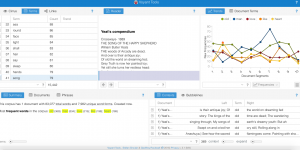
William Butler Yeats is a poet of prolific writing and study. His works and authorial conception have been reified into the minds of literary students and critics. With an examination of word frequency and poetic conventions, this paper asks if the standard, “mystic,” lens and biographical implications that often accompany Yeatsian analysis have bearing. Word frequency was tracked and illuminated by topic modeling software, mainly Voyant tools. Furthermore, the piece reanalyzes the conception of authorship and formalistic text analysis, trying to reconcile post-modern conceptions with formalistic analysis.
The Hadhrami Diaspora: Islam and Indian Ocean Connectivity
Over centuries, merchants, religious scholars, and mystics have migrated from Hadhramaut, a region in south Yemen, to various coastal regions of the Indian Ocean. This has led to the formation of Hadhrami diaspora communities in East Africa, India, and Southeast Asia. Using descriptions of prominent Indian Ocean port cities written by the renowned world traveler Ibn Battuta in the 14th century, this project presents an interactive map that traces his travels in relation to Hadhrami migration and influence on Indian Ocean trade and culture. The purpose of this visualization is to highlight Hadhrami migrants who played versatile roles in an interconnected Indian Ocean world.
The Evolution of Student Political Engagement at Lafayette College
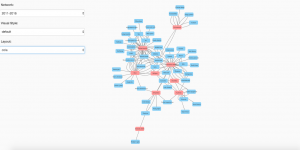 In contemporary discourse, some research paints college students as politically disinterested and uninformed as compared with student activism of the 1960s and 1970s, whereas other research states that these students simply engage with political material in different ways than previous generations. This project uses topic modeling in order to investigate the political atmosphere at Lafayette College during two time periods: 1967–1972 (a time of heightened college activism) and 2011–2016, using the college newspaper as a primary source. By using Cytoscape, GitHub, and Neatline, this project explores how students at Lafayette College engaged with political issues through events such as guest speakers compared between the two time periods.
In contemporary discourse, some research paints college students as politically disinterested and uninformed as compared with student activism of the 1960s and 1970s, whereas other research states that these students simply engage with political material in different ways than previous generations. This project uses topic modeling in order to investigate the political atmosphere at Lafayette College during two time periods: 1967–1972 (a time of heightened college activism) and 2011–2016, using the college newspaper as a primary source. By using Cytoscape, GitHub, and Neatline, this project explores how students at Lafayette College engaged with political issues through events such as guest speakers compared between the two time periods.
Topic Modeling the Supreme Court
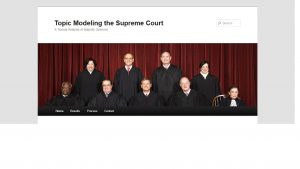 It has long been recognized that justices’ personal beliefs and policy preferences shape the ways they view constitutional law. In this project, digital tools, like MALLET and a web scraper built using Python, are used to look at whether or not ideologically liberal and conservative justices have differences in themes that appear in their majority opinions. To do so, a topic modeling analysis of majority opinions by Justice Sotomayor, Justice Scalia, and Justice Kennedy was done of their opinions since 2009, obtained using Harold Spaeth’s Supreme Court Database and caselaw.findlaw.com.
It has long been recognized that justices’ personal beliefs and policy preferences shape the ways they view constitutional law. In this project, digital tools, like MALLET and a web scraper built using Python, are used to look at whether or not ideologically liberal and conservative justices have differences in themes that appear in their majority opinions. To do so, a topic modeling analysis of majority opinions by Justice Sotomayor, Justice Scalia, and Justice Kennedy was done of their opinions since 2009, obtained using Harold Spaeth’s Supreme Court Database and caselaw.findlaw.com.
Save Our Species
This project was designed to show the impact of humans in the top 5 countries with the most endangered species. Through the interactive graph, created using Tableau, you are able to visually engage with Ecuador, the United States, Malaysia, Indonesia, and Mexico. Using the graph you will be able to see what two greatest threats in each country have posed the most risks to the countries species, look at human population increase, and examine the different factors that are pushing our worlds species to the brink of extinction. – Jillian Fahy
Class of 2015
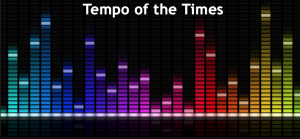 Tempo of the Times
Tempo of the Times
This project was developed in hope of discovering connections between music and society. Artists set out to create music that entertains, but also look to create art that represents the times in which they live. This project looks to examine the way in which societal changes shift musical composition. – Vincent DeMarco and Benjamin Draves
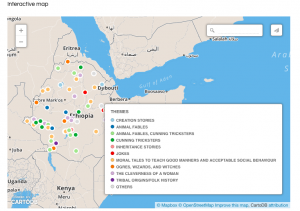 Got Folktales?
Got Folktales?
This project aims to capture Ethiopian folktales and map out reoccurring themes as well as to highlight the moral behind each folktale. In order to accurately represent the diverse ethnicities found within the country we have selected five stories from each of the 13 regions within the country. – Feevan Megersa
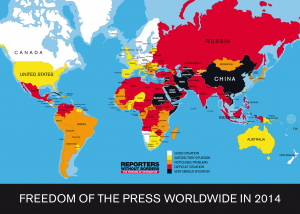 Solution Based Press Freedom Project
Solution Based Press Freedom Project
The Turkish government’s relationship with the country’s press is negatively affecting the quality of its journalism. The country should focus on factors such as press market strength, legal restrictions, and self-regulation to create an environment like Finland’s that is more friendly to the free, untainted flow of information. – Ian Morse
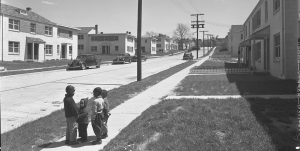 Gentrification and Barry Farms
Gentrification and Barry Farms
This project will analyze the economic and social situations at hand for many people experiencing gentrification specifically in Washington D.C. Gentrification will not only have a detrimental impact on the citizens of Barry Farms, but will also be deleterious to the entire city of Washington DC. – Ahmed Braxton
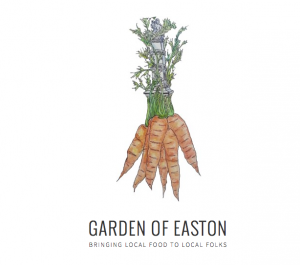 Garden of Easton
Garden of Easton
The Garden of Easton seeks to aggregate the relevant information from all of these entities to connect local residents to food, whether that be a community garden, a CSA pickup location, a homeless shelter, or a meal center. We do so by providing an all-encompassing Android application, web-based map and plain text list of the food providers and producers in our community so that residents have an easily accessible site to find resources they need. – Miranda Wilcha and Peter Todaro
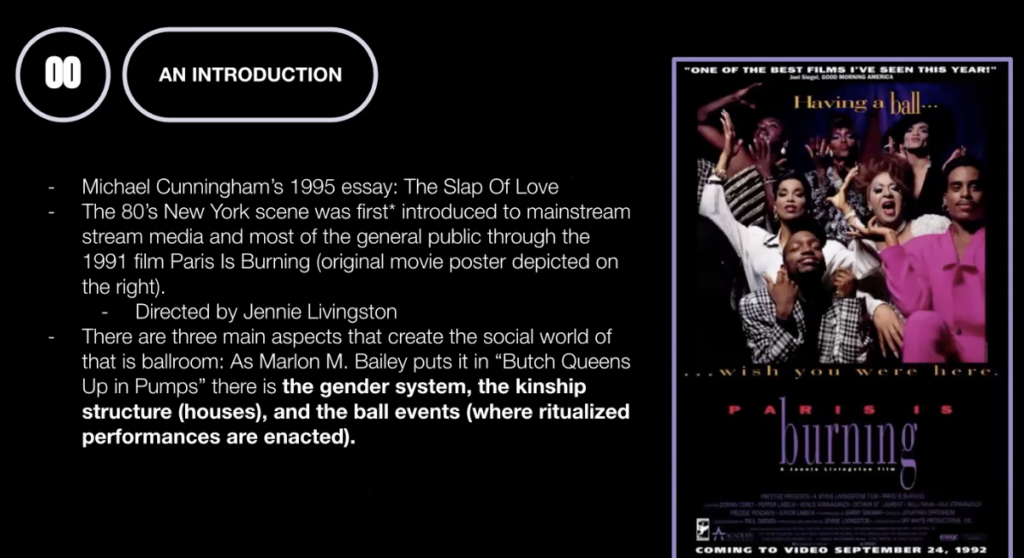
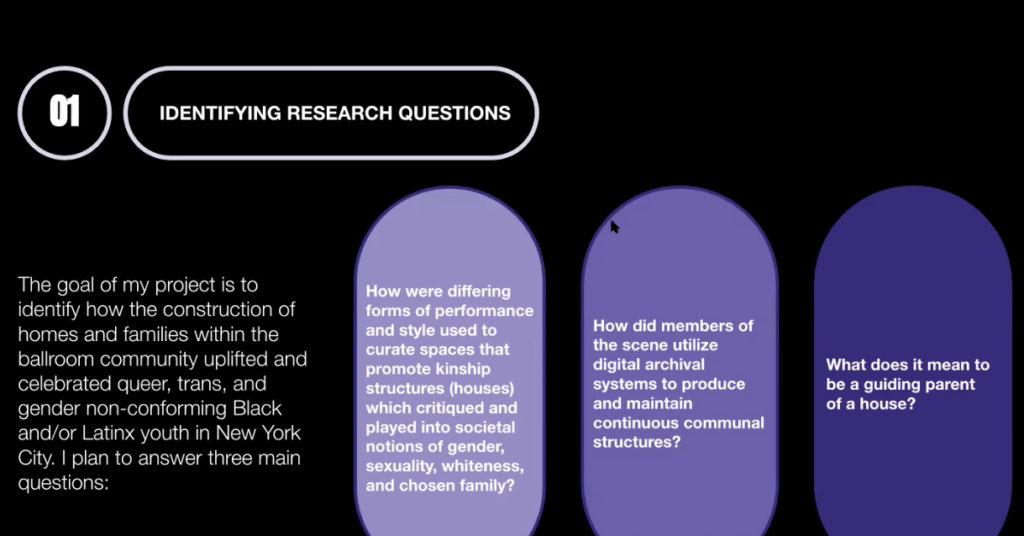
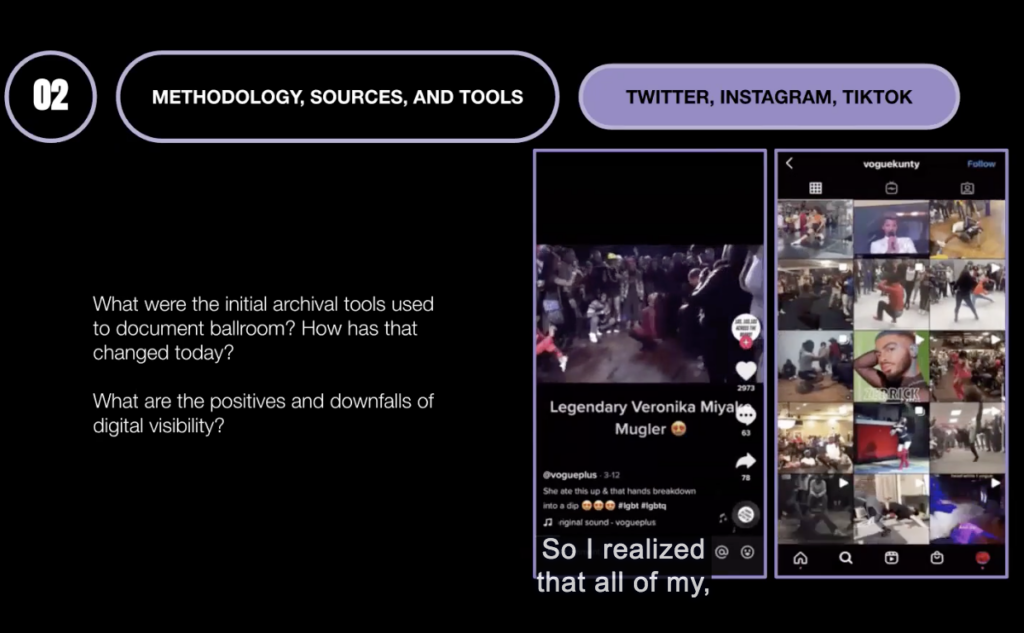
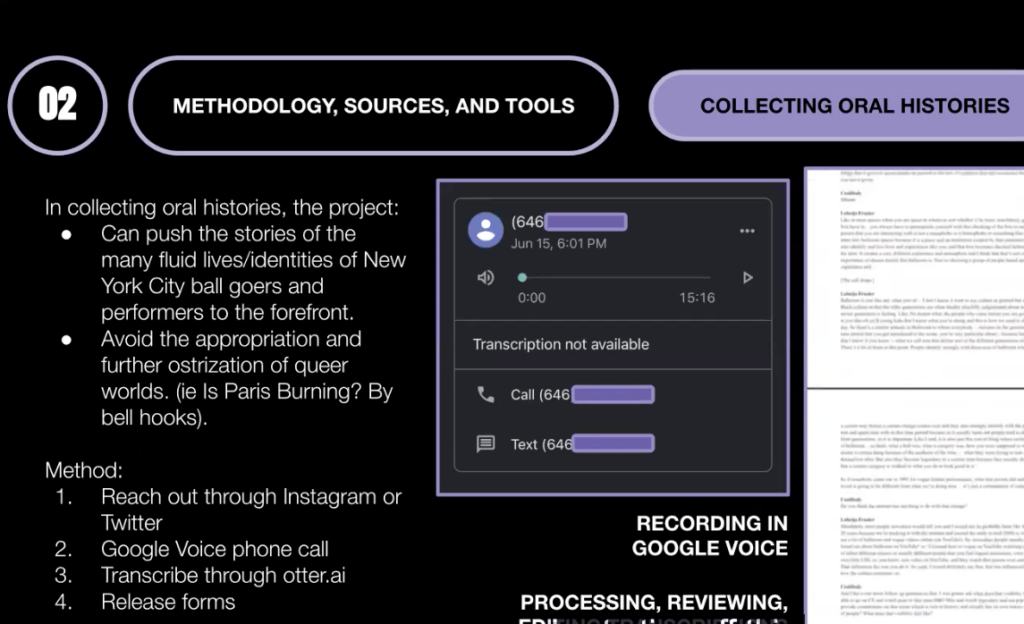
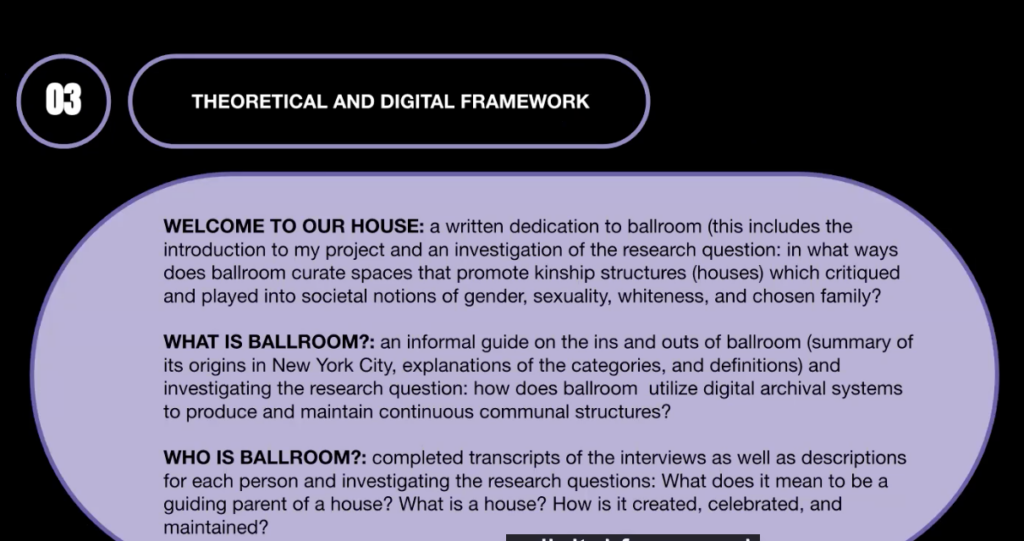
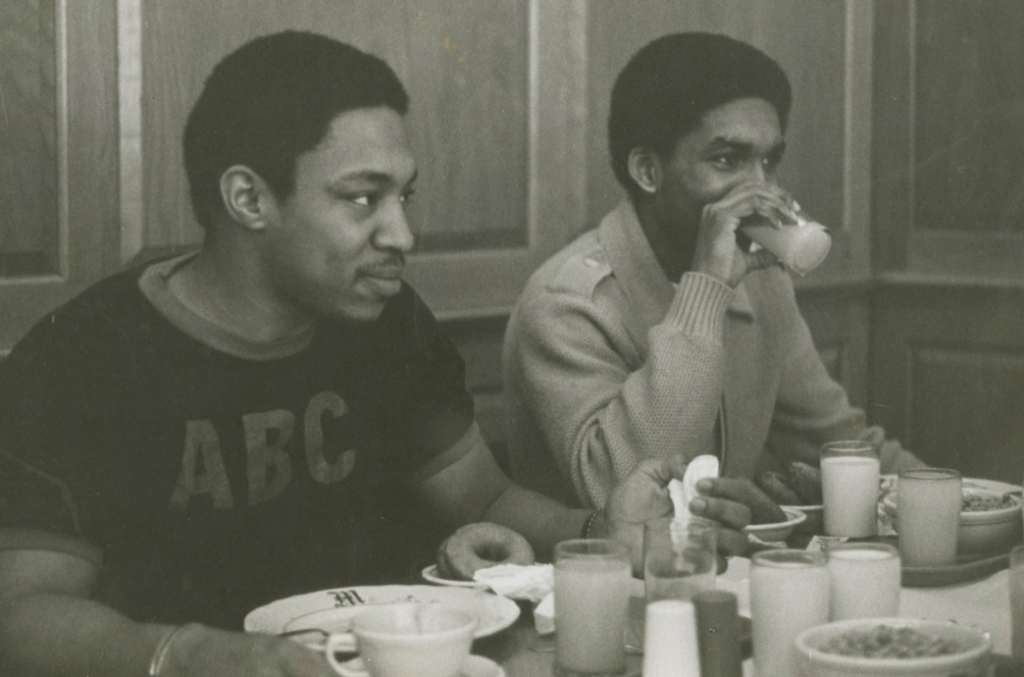
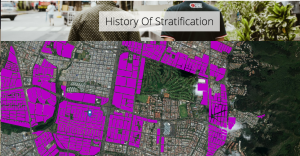
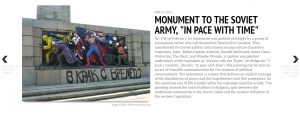
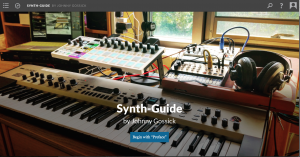
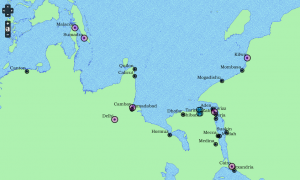
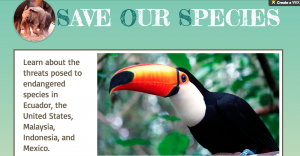
2 thoughts on “Projects”